#European Early Modern Humans
Photo
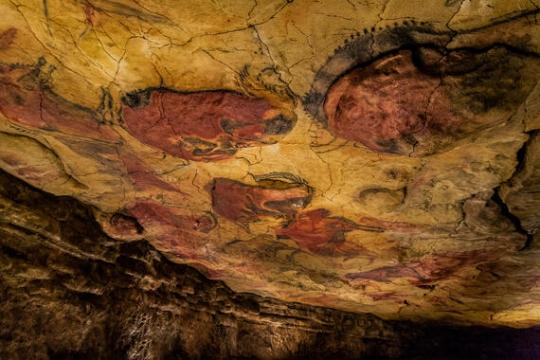
“It has been well said that mythology is the penultimate truth--penultimate because the ultimate cannot be put into words. It is beyond words. Beyond images [...]. Mythology pitches the mind beyond that rim, to what can be known but not told”.
- Joseph Campbell.
*The cave of Altamira.
#Joseph Campbell#Myth#Mythology#Altamira#Jung#Carl Jung#collective unconscious#archetypes#dreams#shadow#hero#ego#Europe#paleolithic#prehistory#solutren#European Early Modern Humans#REligion#Religiosity#pre-indoeuropean#European tradition#Eternal values#Salutreans#Animism#solutrean#solutreans
185 notes
·
View notes
Text

A 34,000 year old Aurignacian lunar calendar carved on a bone-tablet, found in Dordogne in France.
Louvre Museum
NOTE:
The Aurignacian is an archaeological industry of the Upper Paleolithic associated with Early European Modern Humans (EEMH) lasting from 43,000 to 26,000 years ago.
3 notes
·
View notes
Note
can u elaborate on posture being a lie
As Beth Linker explains in her book “Slouch: Posture Panic in Modern America” (Princeton), a long history of anxiety about the proximity between human and bestial nature has played out in this area of social science. Linker, a historian of medicine at the University of Pennsylvania, argues that at the onset of the twentieth century the United States became gripped by what she characterizes as a poor-posture epidemic: a widespread social contagion of slumping that could, it was feared, have deleterious effects not just upon individual health but also upon the body politic. Sitting up straight would help remedy all kinds of failings, physical and moral [...] she sees the “past and present worries concerning posture as part of an enduring concern about so-called ‘diseases of civilization’ ”—grounded in a mythology of human ancestry that posits the hunter-gatherer as an ideal from which we have fallen.
[...]
In America at the turn of the twentieth century, anxieties about posture inevitably collided with anxieties not just about class but also about race. Stooping was associated with poverty and with manual, industrialized labor—the conditions of working-class immigrants from European countries who, in their physical debasement, were positioned well below the white Anglo-Saxon Protestant establishment. Linker argues that, in this environment, “posture served as a marker of social status similar to skin color.” At the same time, populations that had been colonized and enslaved were held up as posture paradigms for the élite to emulate: the American Posture League rewarded successful students with congratulatory pins that featured an image of an extremely upright Lenape man. The head-carrying customs associated with African women were also adopted as training exercises for white girls of privilege, although Linker notes that Bancroft and her peers recommended that young ladies learn to balance not baskets and basins, which signified functionality, but piles of flat, slippery books, markers of their own access to leisure and education. For Black Americans, posture was even more fraught: despite the admiration granted to the posture of African women bearing loads atop their heads, community leaders like Dr. Algernon Jackson, who helped establish the National Negro Health Movement, criticized those Black youth who “too often slump along, stoop-shouldered and walk with a careless, lazy sort of dragging gait.” If slouching among privileged white Americans could indicate an enviable carelessness, it was seen as proof of indolence when adopted by the disadvantaged.
This being America, posture panic was swiftly commercialized, with a range of products marketed to appeal to the eighty per cent of the population whose carriage had been deemed inadequate by posture surveys. The footwear industry drafted orthopedic surgeons to consult on the design of shoes that would lessen foot and back pain without the stigma of corrective footwear: one brand, Trupedic, advertised itself as “a real anatomical shoe without the freak-show look.” The indefatigable Jessie Bancroft trained her sights on children’s clothing, endorsing a company that created a “Right-Posture” jacket, whose trim cut across the upper shoulders gave its schoolboy wearer little choice but to throw his shoulders back like Jordan Baker. Bancroft’s American Posture League endorsed girdles and corsets for women; similar garments were also adopted by men, who, by the early nineteen-fifties, were purchasing abdominal “bracers” by the millions.
It was in this era that what eventually proved to be the most contentious form of posture policing reached its height, when students entering college were required to submit to mandatory posture examinations, including the taking of nude or semi-nude photographs. For decades, incoming students had been evaluated for conditions such as scoliosis by means of a medical exam, which came to incorporate photography to create a visual record. Linker writes that for many male students, particularly those who had military training, undressing for the camera was no biggie. For female students, it was often a more disquieting undertaking. Sylvia Plath, who endured it in 1950, drew upon the experience in “The Bell Jar,” whose protagonist, Esther Greenwood, discovers that undressing for her boyfriend is as uncomfortably exposing as “knowing . . . that a picture of you stark naked, both full view and side view, is going into the college gym files.” The practice of taking posture photographs was gradually abandoned by colleges, thanks in part to the rise of the women’s movement, which gave coeds a new language with which to express their discomfort. It might have been largely forgotten were it not for a 1995 article in the Times Magazine, which raised the alarming possibility that there still existed stashes of nude photographs of famous former students of the Ivy League and the Seven Sisters, such as George H. W. Bush, Bob Woodward, Meryl Streep, and Hillary Clinton. Many of the photographs in question were taken and held not by the institutions themselves but by the mid-century psychologist William Herbert Sheldon. Sheldon was best known for his later discredited theories of somatotypes, whereby he attributed personality characteristics to individuals based on whether their build was ectomorphic, endomorphic, or mesomorphic.
[...]
Today, the descendants of Jessie Bancroft are figures like Esther Gokhale, a Bay Area acupuncturist and the creator of the Gokhale Method, who teaches “primal posture” courses to tech executives and whose recommendations are consonant with other fitness trends, such as barefoot running and “paleo” eating, that romanticize an ancestral past as a remedy for the ills of the present. The compulsory mass surveillance that ended when universities ceased the practice of posture photography has been replaced by voluntary individual surveillance, with the likes of Rafi the giraffe and the Nekoze cat monitoring a user’s vulnerability to “tech neck,” a newly named complaint brought on by excessive use of the kind of devices profitably developed by those paleo-eating, barefoot-running, yoga-practicing executives. Meanwhile, Linker reports, paleoanthropologists quietly working in places other than TikTok have begun to revise the popular idea that our ancient ancestors did not get aches and pains in their backs. Analysis of fossilized spines has revealed degenerative changes suggesting that “the first upright hominids to roam the earth likely experienced back pain, or would have been predisposed to such a condition if they had lived long enough.” Slouching, far from being a disease of civilization, then, seems to be something we’ve been prone to for as long as we have stood on our own two feet.
950 notes
·
View notes
Text
Some notes on worldbuilding with carnivorous cultures:
Animals feed more people than you think. You don't kill a cow for just one steak, this is a modern kind of idea since we're removed from the actual animals we eat our meat from. In fact, slaughtering a single cow often means a feast time for possibly dozens of people. Every part of an animal can be used, and you can see this in cultures that live by ranching and transhumance.
Here, you should look at the Mongols and the people of the Eurasian Steppe, the people of the North American Plains, the people of the Pampas (fun fact; Buenos Aires was called the "carnivore city"), European and Asian cultures that practice transhumance, and those of the Arctic circle.
There are many ways to cook meat, but arguably, the most nutritious way to consume meat is in stew, as it allows you to consume all the fats of the animal and add other ingredients. In fact, mutton soup and stew historically was one of the basic meals for the for people in the Eurasian Steppe, who are one of the people with the highest meat consumption in the world.
Of course, meat spoils away easily. Fortunately, from jerky to cured meats, there are ways to prevent this. In pre-industrial and proto-industrial societies, salted meat was the main way of consumption and exporting meat. This makes salt even a more prized good.
Often, certain parts of animals like eyes, the liver, the testicles, the entrails, are considered not only cultural delicacies but as essential for vitamins and nutrients unavailable in environments such as the poles. The Inuit diet is a very strong example.
Pastures and agriculture have often competing dynamics. The lands that are ideal for mass pasture, that is, temperature wet grasslands, are also often ideal for agriculture. So pastoralism has often been in the margins of agrarian societies. This dynamic could be seen in the Americas. After the introduction of cattle and horses, the Pampas hosted semi-nomadic herdsmen, natives and criollo gauchos. The introduction of wire eventually reduced this open territory, converting it into intense agriculture, and traditional ranching was displaced to more "marginal" land less suitable for agriculture. Similar processes have happened all over the world.
This also brings an interesting question to explore. Agriculture is able to feed more people by density. What about species that DON'T do agriculture, because they're completely carnivorous? The use of what human civilization considers prime agricultural land will be different. They will be able to support much higher population densities than pastoralism.
Pastoral human populations have developed lactase persistance to be able to feed on dairy products even in adulthood. This mutation has happened all over the world, presumably with different origins. In any mammalian species that domesticates other mammals such a thing would be very common if not ubiqutous, as it massively expands the diet. Milk provides hydration, and cheese, yogurth and other such products allows long lasting food sources.
What about hunting? Early humans were apex predators and we are still ones today. However, humans can eat plants, which somewhat reduces the hunting pressure on fauna (though not the pressure of agrarian expansion which can be even worse). An exclusively carnivorous species (for example some kind of cat people) would have to develop very rigid and very complex cultural behavior of managing hunting, or else they would go extinct from hunger before even managing domestication. These cultural views towards hunting have also arosen in people all over the world, so you can get a sense of them by researching it.
It is possible for pastoral nomadic people, without any agriculture, to have cities? Of course. All nomadic peoples had amazing cultures and in Eurasia, they famously built empires. But they traded and entered conflicts with agrarian societies, too. They weren't isolated. Most of nomadic societies were defined by trade with settled ones.
The origin of human civilization and agriculture is still debated. It would be probably completely different for a non-human carnivorous society. One possible spark would be ritual meeting points (such as the historical Gobleki Tepe) or trade markets growing into permanent cities. But in general, pastoralism, hunting and ranching favors low-density populations that would be quite different.
Fishing, on the other hand, is a reliable source of protein and promotes settled cities. One can imagine acquaculture would be developed very early by a civilization hungry for protein.
Other possibilities of course are the raising of insects and mushrooms, both very uncommonly explored in fiction besides passing mentions.
Of course, most carnivorous species have some limited consumption of plant matter and many herbivores are oportunistic predators. The main thing to ask here is what the daily meal is here. For most human agrarian cultures, it's actually grain (this is where the word meal comes from). What about species that cannot live with a grain-based diet? You will find that many things people take for granted in agrarian society would be completely different.
As I always say: the most important question you can ask is "where does the food comes from?"
I hope you found these comments interesting and useful! I would love to do a better post once I'm able to replace my PC (yes, I wrote this all in a phone and I almost went insane). If you like what I write and would love to see more worldbuilding tips, consider tipping my ko-fi and checking my other posts. More elaborate posts on this and other subjects are coming.
276 notes
·
View notes
Text
A Deep Dive Into Disney’s Most Underperforming Princess
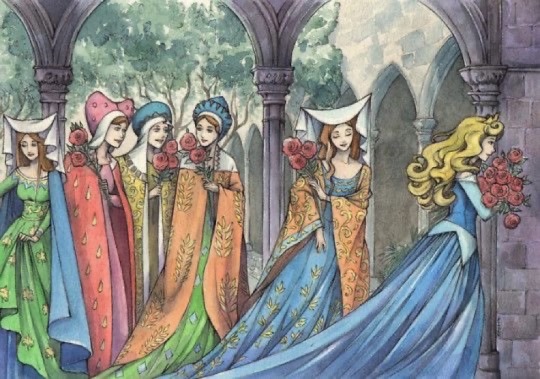
Princess Aurora can’t even be described as controversial. To most, she’s simply boring, too passive, and a continuation of the bland cycle of white princesses who wait around for magic or a prince to save them. Although no one hates her, they find her irritating at the worst, uninteresting at best. In the fifties, they must have thought the same thing. Sleeping Beauty was a commercial failure, and led to company wide annual loss. Sleeping Beauty had followed several other financial flops, such as Bambi and Alice in Wonderland, the latter costing Disney around half a million dollars. Due to her lack of popularity, Aurora may be one of the most neglected Princesses. Many cling to her out of nostalgia, or because she has a nice design, and they find it hard to defend their love for the movie. But the movie’s turbulent history and the amount of detail that went into Aurora herself is what really makes her so incredibly fascinating.
Starting with her design, Disney hired Marc Davis as the supervising animator for Aurora. He also animated Maleficent. The intention was for them to be realistic enough to be placed against the heavily detailed backgrounds of the movie. Davis had embraced this artistic direction, while many of the animators found it, and especially Aurora, laborious and tiring to work on. Both Maleficent and Aurora had to be refined and dynamic. Davis was Disney’s go-to animator for ‘pretty girls’, examples being Tinkerbell and Alice. His knowledge of anatomy and the human body brought both Aurora and Cinderella to life, two of Disney’s most visually iconic characters. Davis had also incorporated Art Nouveau and Art Deco into Aurora’s design, while the tapestry-like art style of the movie was chosen by Eyvind Earle, who was inspired by pre-Renaissance European art. The score and songs were based on Tchaikovsky’s ballet.
Aurora alone required more effort and attention to detail than any princess before her. It took Walt Disney and his team three years to choose a voice actress. They nearly scrapped the project until they discovered Mary Costa, but Disney himself avoided interacting with her in person early on in the project, fearing that she’d influence his vision of the movie.
Aurora was loosely based on her voice actress. Her appearance and her habits (such as gesturing when speaking and singing) were both incorporated into Aurora’s animation. She was also drawn to resemble both her live action model, the same one as Cinderella’s, Helene Stanley, and actress Audrey Hepburn. Davis took inspiration from Audrey Hepburn’s slender physique and elegant demeanour.
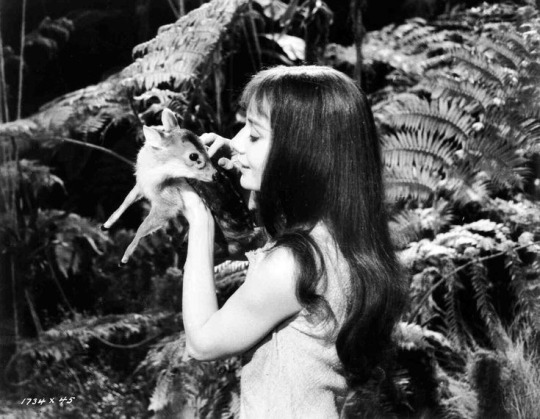
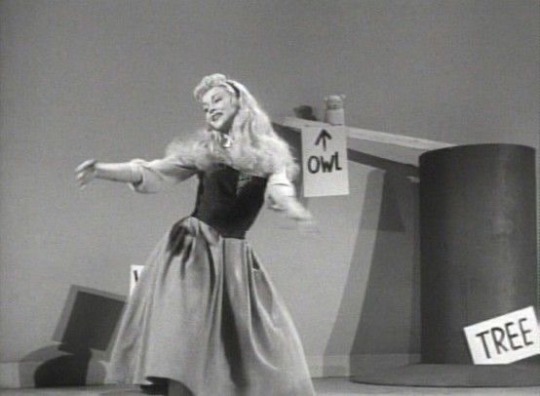
In the book Multiculturalism and the Mouse: Race and Sex in Disney Entertainment, author Douglas Brode referred to Aurora as “a model of modern (50’s) female glamour” and compared her to Brigitte Bardot. He also compared her gown to the work of Christian Dior.

As a character, she was described by Nerve as being “the apex of women who made no choices for themselves.” Aurora is a member of the “Golden Era” of Disney heroines, the original Princess trifecta. Her dreams are the same as those before her. But it’s possible that Aurora’s dreams of true love derived from the need for companionship outside of her three fairy godmothers.
On their website, Disney describes her as, “graceful and kind. She knows that a wonderful future awaits, if you just have the courage to dream it. Aurora enjoys using her imagination and sharing stories with her forest friends. She is also loyal in her relationships -- to her animal friends, her fairies, and her kingdom. Aurora believes in a wish and remains hopeful that she will find the adventure she is looking for.”
Walt Disney himself described Aurora as being “a very layered character/different. She’s calm, yet playful. She has a sense of humour, and she has an imagination.” We can not argue that she was considered layered through the lens of the fifties, because many critics disliked all three of the original princesses for their passive personality, or lack thereof. But from the perspective of the team working on the show, they saw much more to her.
This was the film that Walt Disney worked his hardest on, it took ten years to complete. It was also the very last Princess film he was involved in. Her ‘layers’ were very much intentional. Disney tried to do the same thing with Cinderella.
With Cinderella, they attempted to make her less passive than Snow White, and they showed this through her rebelling against her abusive stepfamily. Maurice Rapf said, "My thinking was you can't have somebody who comes in and changes everything for you. It can't be delivered for you on a platter. You've got to earn it. So in my version, the Fairy Godmother said, 'It's okay till midnight but from then on it's up to you.' I made her earn it, and what she had to do to achieve it was to rebel against her stepmother and stepsisters, to stop being a slave in her own home. So I had a scene where they're ordering her around and she throws the stuff back at them. She revolts, so they lock her up in the attic. I don't think anyone took (my idea) very seriously."
The toned down version of Cinderella, although rebellious in her own way, is still toned down. That part of her character was written out. In comparison to what she would have been, she is passive. Aurora and Cinderella are both less passive than their predecessors, but passive nonetheless. All three of them are the staple damsels in distress.
However, Mary Costa described Aurora as “very strong”, citing her urge to defy her guardians as a display of independence and an example of her strength. Aurora was raised by three women, and had never met a man in her life. Costa believed that because of this, she was ‘innately romantic’ as opposed to lonely or depressed with her sheltered life. To quote, “there was a certain part of her that maybe she didn’t realise, that was just so romantic and maybe expecting something that–she didn’t even know what.”
She believed that her being raised by three older women rather than her parents made her “a little bit older, and yet, she…had this young, outreaching spirit.” Author Douglas Brode points out that the fairies’ independent raising of Aurora mirrors “precisely that sort of women’s commune numerous feminists experimented with throughout the seventies.” Aurora living in an isolated, female-only space, with female authority, is reminiscent of the bold and liberating radical feminist movement. In her own way, as a peasant, she was independent. And that independence and autonomy was taken from her upon discovering that she was royalty and betrothed to a prince. She was leaving her home and the presumed man of her dreams behind, and not of her own free will.
Aurora had enjoyed her simple life, it had fulfilled her, even if she desired more. She had dreams of finding romantic love, which she talks about in the movie’s song ‘I Wonder’. Additionally, her close relationship with animals demonstrates her loving and kind personality. She has a whimsical imagination, and it’s scenes like the ones from Disney’s Enchanted Tales series and ‘Once Upon a Dream’, that would support Costa’s claim of her being a romantic. Where she’s changing in and out of pretty gowns with a magical wand, and giggling to herself. Or dancing happily with the forest animals, thinking about her imaginary prince. In ‘Keys to the Kingdom’, she proudly sings about wishing to make decisions with her heart.
Her independence is demonstrated on multiple occasions in Disney’s discontinued Enchanted Tales: Follow Your Dreams. Aurora graciously accepts responsibility of her kingdom while both her and Philip’s parents travel away for a business trip. All on her own, she is determined to get all of her Princess duties finished on time, the hard way. She refuses to take the easy way out, time and time again, even when she doubts herself. She works harder than even her father, who would take the easy way out by signing royal documents without reading them. Even when Meriwether gives her a magic wand to help her out, she reads and fills out every royal form diligently, and helps out all of her subjects. She manages to complete her tasks on time and throw a banquet for her family and Philip by the time they return. The lesson here is to ‘stick to it’ and to ‘persevere’. But her insistence on doing everything on her own is shown once again in A Kingdom of Kindness, where she must plan a surprise party for Philip. The three fairies attempt to help her, but she continues to tell them that she wants to do it on her own. This series was cancelled, and it is difficult to find any clips of it online. But this short-series gives us some insight into Aurora’s character.
She is assumed to be the protagonist by most, but many consider the three fairies to be the protagonists. They help move the story along, they protect Aurora, and they have distinct, in-your-face personalities. Many consider Aurora authentic, or the title character, but whether she is the protagonist or not has never been agreed upon. Her lack of role in the story has been criticized by many. But some take it as an allegory for the lack of control
The most lengthy debate surrounding Aurora has to do with how feminist her character is. She may have been an improvement from the previous princesses, but she is not regarded as a particularly feminist character.
The three original princesses, all being pale-skinned European princesses with a naive and endlessly forgiving (an unrealistic standard), sends a message to their viewers that this is what princesses should look like, how they should behave. All three classic princesses are deeply intertwined with Disney’s long history of racism and bigotry. In an attempt to amend this, Disney has released back to back live action remakes of their movies, all receiving mixed reviews. Maleficent was Sleeping Beauty’s remake, focused on a maternal relationship between Maleficent and Aurora. Many people interpreted the scene where Maleficent’s wings get cut off in her sleep as sexual assault. This inclusion made many survivors of sexual assault feel represented by the character.
From my perspective, the original Sleeping Beauty is technically a movie centred around women. A teenage girl lives with her three surrogate mothers, who end up saving her in the end from the female antagonist. Although Prince Philip’s role in the story is still a large part of what moves the plot along. It is Philip who is captured, as Maleficent knew that he would go looking for her. He courted Aurora, defeated Maleficent with the help of the three fairies, and kissed the princess awake. But he still doesn’t get as large of a role, or nearly as much screen time, as the three fairies.
In short, both the movie and the princess fascinate me. And although there is depth if you squint, a character does not need to be fleshed out to be lovable, or at least endearing. Aurora is my favourite Disney Princess, and I find the history behind her and the film to be more interesting than what meets the eye.
#disney#princess aurora#my girl!!!#sleeping beauty#show white#classic princesses#cinderella#walt disney#analysis#disney analysis#essay#feminism#mina loves disney
227 notes
·
View notes
Text
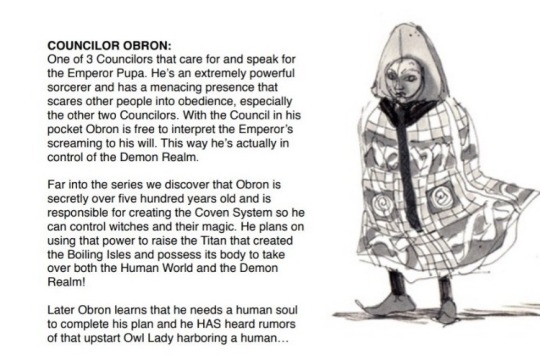
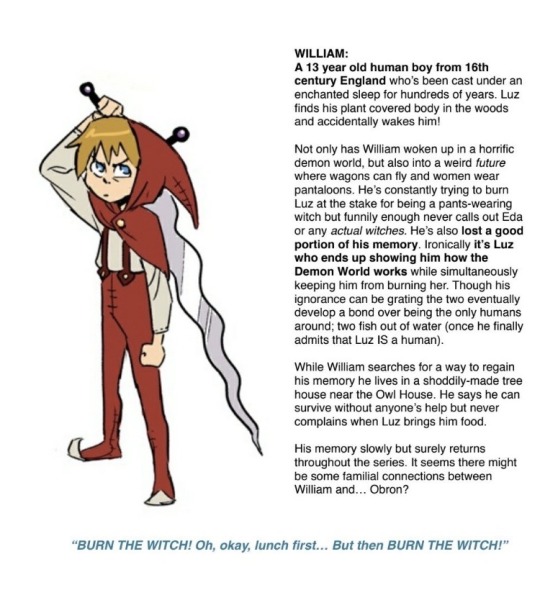
Speaking of; The Owl House's pitch bible got leaked as well! So while I look for the rest of it, let’s examine some interesting tidbits I found on Proto-Belos, or 'Obron' as he was once known, and William AKA Proto-Hunter!
Can I just say, I'm quite smug to know that Belos resurrecting the Titan as his endgame was always the original plan? I called it from the start! It was also kinda obvious, but c'mon. The Bionicle fan in me was obsessed.
I'm not surprised about the mentions of Pupa, or the name Obron or even the appearance; We've actually seen all of this before! But what does make me curious is the mention of two other councilors... So there's supposed to be a trio? Again, I always bring up the three statue motif in my speculation about the original plans of the show, I wonder if there's any connection there. Would Kikimora have been one of the other councilors, and who would've been the third? And it seems the coven system was always a thing, early on at least.
Yeah, the mention of '500 years' and the connection to William, etc. Even as Obron he was supposed to have been a human witch hunter turned actual witch. Comparing this to the pilot we got, it may not be Obron that the characters are referring to, since he's not the Emperor. But maybe he declared himself Emperor since he was basically the only one in charge by that point.
Makes me wonder if he hates humans under the delusion of 'I hate modern humans'. He hates what humanity has become and he's taking out his anger on modern humans; We also know the main reason he wants Luz in the pilot, to awaken the Titan. I presume Obron preserved William in stasis and hid him away, only for Luz to wake him up earlier than intended. I can imagine the scene/episode where Obron realizes William has been awake and roaming about for a while now...
There's the confirmation that Prince William and Hunter are the same character, or were. As I guessed, his witch-hunting tendencies would've been established early on as a strange gag, a quirk, only to become so much more darkly significant. I wonder if in this draft, Obron's past as a witch hunter also has relevance; Does he think he's 'saving' humanity by using the Titan to conquer both worlds, wiping out the denizens of one? Also him being a feral kid subsisting off of food given to him by friends is such Labyrinth Runners vibes. Was William always going to have his dynamic with Willow, given Luz plays a bigger role in him opening his mind?
Given we had a 'proof of concept' animation leaked a while back, I wonder if that was an even earlier draft to the pitch bible, given William is PRINCE William. Maybe he's meant to be an actual European human, because European bigotry towards witches existed back then I think, even if it wasn't as pronounced. And Obron does bear a resemblance to one of the Proto-Belos designs, though I'm not sure which came first.
…Huh. Would William have been Obron’s nephew or. God. Would he have been his brother. And while William never grew up because magical stasis, Obron did and now sees his brother be the exact same but also change. Man. And William just has to reconcile, when he gets his memories back, the jump from his brother, a kid like him, to Obron. So we still got the desperate attempt to preserve his brother, only for his brother/Hunter to ‘betray’ him.
236 notes
·
View notes
Text
AU where Merlin is Arthur's familiar
Firstly, for everyone that doesn't know, in European folklore of the medieval and early modern periods, familiars were believed to be supernatural entities or spiritual guardians that would protect or assist witches and cunning folk in their practice of magic. They're almost always represented as some kind of animal, like a cat or a bird, sometimes a demon.
So, having that cleared up, how would Merlin be a familiar and how would he be Arthur's familiar of all people when Arthur isn't a sorcerer?
That's the thing, in this AU a group of evil druids or sorcerers find out about Merlin's identity earlier and his whereabouts while he is still in Ealdor. Not wanting Emry's magic to be under the command of some prophesied king and desiring that power to themselves, they kidnapped him and make a ritual to turn him into a familiar (a merlin especifically). They also erase his memory so Merlin doesn't remember he was ever human. Just when they where about to bond the bird to the sorcerer/druid leader to have Emrys magic under their command, Merlin manages to escape. He doesn't know who he is or where to go, he just knows he has to go far away from there.
Somehow, probably through his run away ordeal, familiar Merlin ends up in Camelot's castle, with an injured wing. He's chirping in pain when the young prince finds him in his yard.
Arthur: (covering his ears) Why are you making so much noise? Shut up! (looking closely) Wait! you're hurt? (picks him up carefully) I think your wing is broken. (Merlin chirps louder) Alright, alright! I'll find help. (runs as fast as he can) Gaius! Gaius!
The court physician bandages the bird's wing, but he can't take care of it due to his work, so Arthur does it. He makes a place for the bird in his room and feeds it. He tries to not get attached to it knowing the bird will have to return to its natural environment as soon as it recovers. However, after the bird's wing is healed, it doesn't want to leave, not matter how many times Arthur frees it in the forest, it always comes back, so finally Arthur decides to keep it. He has a bit of a fight with his father, because he never let Arthur have a pet, but after the bird protects the prince of a witch that was in disguise by stinging her eyes out, the king finally allows the prince to keep it. The prince, very happy, brings the bird to his chambers.
Arthur: (with Merlin in his forearm) Now the you're oficially my pet- (the bird chirps in protest) Well, my, eh... animal companion? (the bird deadpans) We'll work on that later. The point is, I should probably give you a name. (the bird moves its wings, excited) What about...bird? (the bird shakes it's head) Yeah, I've been calling you that from the start, so no. hmmm. What about falcon? Gaius says you're a falcon, though you're too small to be one, honestly. (the bird chirps, offended). I should just call you falcon or little falcon. No, it's still too long. Lil' falc? No. hmmmm. I think Gaius said you were a especific kind of falcon? How was it? Mar... Mer...Merloni? Merlon... Merlin! That was it. I'll call you Merlin.
Without knowing, Arthur just finished the last step of the ritual: naming the familiar, and with that, becoming the familiar's master. When the bond is created, a flash of light blinds him and, suddenly, the bird is replaced by a boy, who now is sitting on him, while he's spread on the floor.
Arthur: (looking up, shocked) What the fu-
Merlin: (looking down, confused) Arthur! Why are you smaller now? Wait... I can talk? (brings his hand to his face surprised) And I have... hands? Where are my wings? (panicking) Arthur, I lost my wings! And my feathers!(crying)NOOOOO!
Arthur: Merlin? That's.. you? Merlin? Mer...Merlin, shut up! (Merlin stops crying) And get off me! (shoves Merlin aside) How did this happen?
Merlin: You think I know?! Maybe that witch cursed me to be as ugly as you as a revenge for turning her blind. (sobs) My wings, my beautiful wings.
Arthur: (offended) Excuse me? Is not like you were a "handsome" bird either, you poor excuse of a falcon.
Merlin: How would you know, human with so little imagination that names his bird after their species?
After their stupid fight, they go to Gaius, in secret, of course. They can't have the king knowing the prince's bird was cursed. The physician does his investigation and, after Merlin discovers he can turn to his bird form and his human form at will and do some magic stuff, he concludes Merlin is, in fact, a familiar.
Gaius: Incredible! I thought they were a myth. It's said they're spiritual guardians of magic itself and that just the most powerful sorcerers could summond one and tamed them to become even more powerful.
Merlin: No... it can't be. I'm just a bird! I can't be a magical creature! I can't!
Arthur: (Knowing Merlin's scared due to his father laws and believes) Merlin. It's okay.
Merlin: (crying, almost hysterical) NO! I'm not a monster! I swear! I'm not evil!
Arthur: I know. Human, bird or familiar, or whatever, you're a good person. Well, a good being. Nothing is going to change that and nothing is going to happen to you, alright?
Merlin: (calms down) alright (snifs)
Arthur: But we need you to remember. Do you have any memory of you being anything but a bird?
Merlin: No, I've always been a bird. Although... (thoughtful) I don't... remember being a chick before.
Arthur: A what?!
Gaius: He means a baby bird.
Arthur: Oh, right (blushes). I knew that.
Merlin: Yeah, my very first memory is just before I came to Camelot, when... I was trap in a... cage. (he trembles at the memory) There were humans with capes, I think. They said they wanted to... control me, to had me at their mercy. I don't know what they wanted to do with me but I escaped. I thought I wouldn't make it. (with tears in his eyes) I was.. so scared.
Gaius: They must be the sorcerers that summonded you.
Merlin: Great. So not only I'm some magical entity but I'm sorcerer's slave now?
Arthur: (fiercely) You are NOT a slave! You are... ("mine" he is about to say, but stops) your own.
Merlin: (suddenly scared) What if they look for me?!
Arthur: I won't let them take you. I promise.
Gaius: And I don't think you have to worry about being some sorcerer's slave, Merlin. If you were bonded to one, you wouldn't have been able to escape in the first place.
Merlin: That means... (hopeful) I'm free?
Gaius: And in Camelot where magic is forbidden, so you're safer as you can be. You'll just have to keep pretending you're a bird, if that's not a problem with you.
Merlin: I'm completly fine with that.
Arthur: (joyful) And me! (composes himself) I mean, I like him better when he can't talk. (Merlin frowns at him)
Times goes by. At first, Merlin stays in his bird form and tries not to do magic, because, apparently he's been doing magic all this time without knowing (honestly, how was he supposed to know all the things he accidentally broke or dirt in Arthur's room were repaired and cleaned by him? He just thought Arthur has very efficient servants!). But it becomes impossible, not only because not doing magic makes him sick, but Arthur keeps running into danger time and time again, so he has to use magic to protect him. Arthur scolds him everytime he does that, he doesn't want his friend to be discover, but eventually it becomes rutine. Also, Merlin starts to take his human form more and more frecuently, because he needs Arthur to understand him, sometimes to give him a piece of his mind, to warn of some danger he finds out, or simply to cheer him up when he's sad or pass time.
Merlin: Is magic really evil? (he looks at his hands)It doesn't feel evil when I use it.
Arthur: How does it feel to you?
Merlin: It feels like... flying (he smiles and closes his eyes) So natural and beautiful, like the earth under my feet and the wind moving my feathers. And I feel it everywhere, not just inside me, but in every living thing. In every flower that blooms, every pup and chick that is born. Even in you. It's suppose to corrupt you, but instead of feeling wrong, I feel so good and... so alive.
Arthur: (looks at him for a moment, completely in love and then composes himself) I don't believe magic is evil. Not anymore.
Merlin: (open his eyes, surprised) Why's that?
Arthur: At first I thought you were an exception to the rule, but then Morgana-
Merlin: (even more surprised) She told you?!
Arthur: (just as surprised) You knew?!
Merlin: I could feel the magic inside her (he admits, guiltily). I wanted to be wrong. She's one of the kindest human I know, but then I saw her doing magic and... I just couldn't tell you. It wasn't my secret to tell, I'm sorry.
Arthur: It's alright. I understand. (he sighs) She was... so scared, Merlin. She begged not to tell my father, like I could ever do that (he laughs dryly). And she didn't learn magic, she just have it. She didn't even know she was a sorcerer until recently.
Merlin: Oh... (thoughtful) That explains a lot of things.
Arthur: What do you mean?
Merlin: Morgana isn't the only one, I think. Sometimes I fly around and I feel people with magic inside them. Some of them are evil, so I call you, but there are others that just do minor stuff, like healing spells and potions. But there are other too that… don't do magic at all and yet… the magic inside them is so strong. I thought maybe I was seing the potential of magic, but now…
Arthur: (in heavy realisation) So it's true. My father's been killing innocent people all this time.(with tears rolling down his eyes) I've been killing innocent people all this time.
Merlin: (hugging and comforting him) No! Arthur you did nothing wrong. You didn't know.
Arthur: (crying and hugging tightly in return) I'm sorry! I'm so sorry!
Aaaand that's it. I don't know what else could happen. Apart of merthur getting together obviously. There would be a lot of pinning and confused feelings. Arthur first meets Merlin as a bird after all, so accepting he has a crush on his bird friend is not going to be easy. The same goes to Merlin. Lets not talk about when they both discover they're bonded and Arthur could technically control Merlin and use Merlin's magic at his will if he wanted. And I guess at some point the evil sorceress/druids would try to get Merlin back. And then Merlin finding out he was human before and has a mother in ealdor… Damn that's a lot of angst.
Anyways, I still have a couple of fics on going so I don't think I'm going to write this anytime soon... or ever. So if anyone wants to write it feel free to do it. Or just comment any ideas you have for this concept/prompt below so I can keep them in mind if I write it in the end.
EDIT: I DID A PART 2, GUYS!!! -> LINK
#merthur#merlin bbc#bbc merlin#merlin#arthur and merlin#merlin and arthur#merlin fanfic#merlin fic#merthur prompt#merlin prompt#merthur fic#merthur fanfic#concept#king arthur#arthur#merlin x arthur#arthur pendragon#merlin emrys#Merlin as Arthur's familiar/Arthur's shapeshifter falcon AU
348 notes
·
View notes
Text

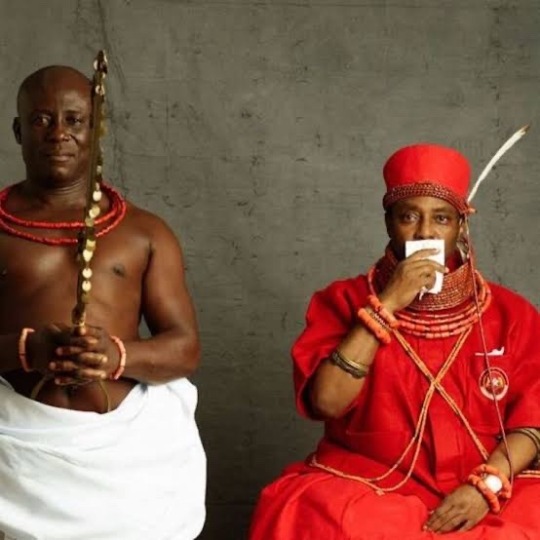
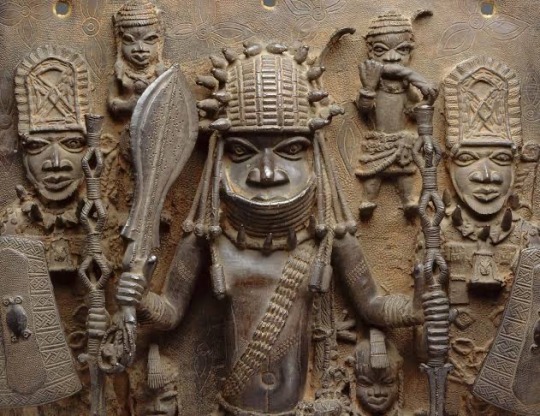
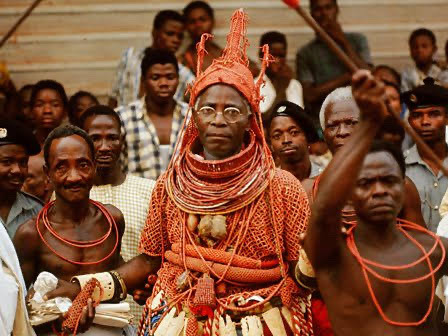
Black history is not slavery
Slavery is not the only history of black Black history goes deeper than slave trade
This is a message for my black brothers and sisters
Today I will be talking about the people of benin
The historical kingdom of Benin was established in the forested region of West Africa in the 1200s C.E. According to history, the Edo people of southern Nigeria founded Benin. They no longer wanted to be ruled by their kings, known as the ogisos. They asked a prince from Ife, an important West African kingdom, to take control. The first oba, or king, in Benin was Eweka. He was the son of the prince from Ife.The kingdom reached its greatest power and size under Oba Ewuare the Great. He expanded the kingdom and improved the capital, present-day Benin City; the city was defined by massive walls. The height of power for Benin’s monarchs began during this period. To honor the powerful obas, the people of Benin participated in many rituals that expressed their devotion and loyalty, including human sacrifices.Artists of the Benin Kingdom were well known for working in many materials, particularly brass, wood, and ivory. They were famous for their bas-relief sculptures, particularly plaques, and life-size head sculptures. The plaques typically portrayed historical events, and the heads were often naturalistic and life size. Artisans also carved many different ivory objects, including masks and, for their European trade partners, salt cellars.The success of Benin was fueled by its lively trade. Tradesmen and artisans from Benin developed relationships with the Portuguese, who sought after the kingdom’s artwork, gold, ivory, and pepper. In the early modern era, Benin was also heavily involved in the West African slave trade. They would capture men, women, and children from rival peoples and sell them into slavery to European and American buyers. This trade provided a significant source of wealth for the kingdom.Benin began to lose power during the 1800s, as royal family members fought for power and control of the throne. Civil wars broke out, dealing a significant blow to both Benin’s administration as well as its economy. In its weakened state, Benin struggled to resist foreign interference in its trading network, particularly by the British. A desire for control over West African trade and territory ultimately led to a British invasion of Benin in 1897. Benin City was burned by the British, who then made the kingdom part of British Nigeria (which became Nigeria after the country gained independence in 1960). After that time, the kingdom no longer played a governing role in West Africa. However, even today, the oba still serves in Benin City as a government advisor.


#life#culture#black history#history#blm blacklivesmatter#aesthetic#generations from exile tribe#genshin fanart#sculpture#nigeria#heritage#transgender#traditional media
730 notes
·
View notes
Text
January 2024 Witch guide
Full Moon: January 25th
New moon: January 11th
Sabbats: None
January Wolf Moon
Known as: Bear Moon, Chaste Moon, Cold Moon, Disting Moon, Goose Moon, Moon of Little Winter, Moon of Strong Cold, Quiet Moon, Snow Moon, Stay at Home Moon, Sun Has Not Strength to Thaw Moon & When Snow Blows Like Spirits In The Wind Moon
Element: Air
Zodiac: Capricorn & Aquarius
Nature spirits: Brownies & Gnomes
Deities: Freya, Hera, Innana & Saraswati
Animals: Coyote & fox
Birds: Blue Jay & pheasant
Trees: Birch & Hazel
Herbs: Cones, holy thistle &marjoram
Flowers: Crocus & Snowdrop
Scents: Mimosa & musk
Stones: Chrysoprase, garnet, hematite, moonstone, onyx & jet
Colors: Black, blue-violet, grey, silver & white
Energy: Adventurous, ambitious, awareness, beauty, beginning & conceiving; business, career, conserving energy, energy below the surface, organization, political matters, potential, protection, recognition, reputation, reversing spells & spirituality
The name for the January full Moon is believed to have originated from Celtic and Old English roots, which European settlers then brought to the New World.
At one point, gray wolves were among the most widespread land mammals on our planet. According to the Wolf Conversation Center, gray wolves “inhabited most of the available land in the Northern Hemisphere.” Habitat destruction and persecution by humans have reduced their range by about a third worldwide and 90 percent in the lower 48 states.
The wolf’s adaptable nature to survive in a wide range of habitats and ability to prey on the largest mammals living in those regions made it widespread. Basically, if there are enough deer, moose, elk, caribou, bison, and musk ox, wolves can survive. Predation of domestic animals caused friction with European settlers and early Americans who aggressively hunted the wolves.
Werewolf myths can be found in ancient Greek and Roman societies, throughout European history and among some Native American tribes. In modern storytelling the transformation from man to wolf has been closely tied to the full Moon in films like “The Wolf Man” and “American Werewolf In London.”
Howl at the Moon means to waste energy pursuing something unattainable. It’s shorthand for doing something crazy. However, howling is hardly a waste of energy among wolf packs. And they aren’t howling at the Moon. The Moon just happens to be shining during times when wolves most often howl.
A wolf’s howl can be heard miles away. The vocalization helps wolves locate separated members and even communicate between packs marking their territories. One study recorded spontaneous howls and responses happen most often between 11 p.m. and 6 a.m.
The cry of wolves doesn’t play into the Sioux name for the January full Moon, which is known as “The Time When Wolves Run Together.” Wolves do plenty of running to defend territory that can stretch hundreds of square miles to find enough prey to support the pack.
Other Celebrations
• Hogmanay | January 1st: is the Scots word for the last day of the old year and is synonymous with the celebration of the New Year in the Scottish manner. It is normally followed by further celebration on the morning of New Year's Day (1 January) and, in some cases, 2 January—a Scottish bank holiday. In a few contexts, the word Hogmanay is used more loosely to describe the entire period consisting of the last few days of the old year and the first few days of the new year. For instance, not all events held under the banner of Edinburgh's Hogmanay take place on 31 December.
The origins of Hogmanay are unclear, but it may be derived from Norse and Gaelic observances of the winter solstice. Customs vary throughout Scotland and usually include gift-giving and visiting the homes of friends and neighbours, with particular attention given to the first-foot, the first guest of the new year.
• Compitalia/ Feast of Lades | January 3-5: was an annual festival in honor of the Lares Compitales, household deities of the crossroads, to whom sacrifices were offered at the places where two or more ways met.
Dionysius said that Servius Tullius founded the festival, which he describes as it was celebrated in his time. Dionysius relates that the sacrifices consisted of honey-cakes (Ancient Greek: πέλανοι) presented by the inhabitants of each house; and that the people who assisted as ministering servants at the festival were not free men, but slaves, because the Lares took pleasure in the service of slaves. He further adds that the Compitalia were celebrated a few days after the Saturnalia with great splendor, and that the slaves on this occasion had full liberty to do as they pleased.
During the celebration of the festival, each family placed the statue of the underworld goddess Mania at the door of their house. They also hung up at their doors figures of wool representing men and women, accompanying them with humble requests that the Lares and Mania would be contented with those figures, and spare the people of the house
Sources:
Farmersalmanac.com
Llewellyn's Complete Book of Correspondences by Sandra Kines
A Witch's Book of Correspondences by Viktorija Briggs
Llewellyn's 2023 magical almanac: practical magic for everyday living
Wikipedia
Encyclopedia Britannica
#correspondence#witch guide#January 2024#wolf moon#wiccablr#witchblr#paganblr#witch community#witchcraft#witches of tumblr#tumblr witch community#witch tumblr#witch tips#beginner witch#traditional witchcraft#baby witch#witch friends#moon magic#wolves#grimoire#book of shadows#spellbook#spellwork#witchcore#witch#new year#witchy things#witches#baby witch tips#GreenWitchcrafts
261 notes
·
View notes
Text
At the outset of H. G. Wells's The War of the Worlds (1898), Wells asks his English readers to compare the Martian invasion of Earth with the Europeans' genocidal invasion of the Tasmanians, thus demanding that the colonizers imagine themselves as the colonized, or the about-to-be-colonized. But in Wells this reversal of perspective entails something more, because the analogy rests on the logic prevalent in contemporary anthropology that the indigenous, primitive other's present is the colonizer's own past. Wells's Martians invading England are like Europeans in Tasmania not just because they are arrogant colonialists invading a technologically inferior civilization, but also because, with their hypertrophied brains and prosthetic machines, they are a version of the human race's own future.
The confrontation of humans and Martians is thus a kind of anachronism, an incongruous co-habitation of the same moment by people and artifacts from different times. But this anachronism is the mark of anthropological difference, that is, the way late-nineteenth-century anthropology conceptualized the play of identity and difference between the scientific observer and the anthropological subject-both human, but inhabiting different moments in the history of civilization. As George Stocking puts it in his intellectual history of Victorian anthropology, Victorian anthropologists, while expressing shock at the devastating effects of European contact on the Tasmanians, were able to adopt an apologetic tone about it because they understood the Tasmanians as "living representatives of the early Stone Age," and thus their "extinction was simply a matter of … placing the Tasmanians back into the dead prehistoric world where they belonged" (282-83). The trope of the savage as a remnant of the past unites such authoritative and influential works as Lewis Henry Morgan's Ancient Society (1877), where the kinship structures of contemporaneous American Indians and Polynesian islanders are read as evidence of "our" past, with Sigmund Freud's Totem and Taboo (1913), where the sexual practices of "primitive" societies are interpreted as developmental stages leading to the mature sexuality of the West. Johannes Fabian has argued that the repression or denial of the real contemporaneity of so-called savage cultures with that of Western explorers, colonizers, and settlers is one of the pervasive, foundational assumptions of modern anthropology in general. The way colonialism made space into time gave the globe a geography not just of climates and cultures but of stages of human development that could confront and evaluate one another.
The anachronistic structure of anthropological difference is one of the key features that links emergent science fiction to colonialism. The crucial point is the way it sets into motion a vacillation between fantastic desires and critical estrangement that corresponds to the double-edged effects of the exotic. Robert Stafford, in an excellent essay on "Scientific Exploration and Empire" in the Oxford History of the British Empire, writes that, by the last decades of the century, "absorption in overseas wilderness represented a form of time travel" for the British explorer and, more to the point, for the reading public who seized upon the primitive, abundant, unzoned spaces described in the narratives of exploration as a veritable "fiefdom, calling new worlds into being to redress the balance of the old" (313, 315). Thus when Verne, Wells, and others wrote of voyages underground, under the sea, and into the heavens for the readers of the age of imperialism, the otherworldliness of the colonies provided a new kind of legibility and significance to an ancient plot. Colonial commerce and imperial politics often turned the marvelous voyage into a fantasy of appropriation alluding to real objects and real effects that pervaded and transformed life in the homelands. At the same time, the strange destinations of such voyages now also referred to a centuries-old project of cognitive appropriation, a reading of the exotic other that made possible, and perhaps even necessary, a rereading of oneself.
John Rieder, Colonialism and the Emergence of Science Fiction
681 notes
·
View notes
Text
According to some study (idk if it's true) being a morning person is linked to Neanderthal genes, since their circadian rhythms adapted to the shorter day lengths in Europe compared to more equatorial regions. The percentage of Neanderthal genes found in modern humans is related to ethnic background, with people of European descent generally having the most Neanderthal admixture.
So can we please use this to convince society that holding shit in the early morning is racist? God that would benefit me so much. I don't care if the study is actually right. I just want late-risers to become a protected class.
257 notes
·
View notes
Text
European history is not white


Someone commented this to a post I reblogged, which message is basically "we shouldn't venerate the Dead White Man HistoryTM and we should elevate other history too, but we still need to learn Dead White Man HistoryTM to understand the world today". It's basically a response to the attitude you sometimes come across in the internet that sees learning about those Dead White MenTM as not worth our time. And this person, who seems to be following this blog because they responded to my reblog, takes it as a personal attack against all white Europeans. For some reason. Well I take these comments as a personal attack against historical understanding.
Firstly, the post clearly didn't say you shouldn't venerate any European history, because not all European history is Dead White Man HistoryTM. Obviously this person thinks European history is white, which is not true, but surely, surely, they know it's not all men? Secondly, what is "west culture"? When did it start? There is not one western culture, not one European culture. The first concept of some shared Europeanness was the Christendom in Middle Ages, but it was not exactly the same as we think of Europe today, because it did not include the pagan areas, but it included a lot of Levant and parts of Central Asia, where there were large Christian areas. And Europe was not "very white" nor was the Christendom. The more modern concept of West was cooked in tandem with race and whiteness during colonial era and Enlightenment, around 17th to 18th centuries. And Europe was certainly not very white then. The western world also includes a lot of colonized areas, so that's obviously not white history. Thirdly, implying that asking white people to apologize for European history (which no one did ask) is as ridiculous as asking black people for African history is... a choice. Black people do exist in a lot of other places than Africa, which white people should be the ones apologizing for, and really white people also have a lot to answer for about African history. Lastly, if you think the quote "anyone who thinks those dead white guys are aspirational is a white supremacist" means you as an European are demanded to apologize for your existence, maybe - as we say in Finland - that dog yelps, which the stick clanks. (I'm sorry I think I'm the funniest person in the world when I poorly translate Finnish sayings into English.)
The thing is, there is no point in European history, when Europe was white, for three reasons. 1) Whiteness was invented in 17th century and is an arbitrary concept that has changed it's meaning through time. 2) Whichever standard you use, historical or current, Europe still has never been all or overwhelmingly white, because whiteness is defined as the in-group of colonialists, and there has always been the internal Other too. In fact the racial hierarchy requires an internal Other. 3) People have always moved around a lot. The Eurasian steppe and the Mediterranean Sea have always been very important routes of migration and trade. I've been meaning to make a post proving exactly that to people like this, since as I've gathered my collection of primary images of clothing, I've also gathered quite a lot of European primary images showing non-white people, so I will use this opportunity to write that post.
So let's start from the beginning. Were the original inhabitants of Europe white? Of course not. The original humans had dark skin so obviously first Europeans had dark skin. Whenever new DNA evidence of dark skinned early Europeans come out (like this study), the inevitable right-wing backlash that follows is so interesting to me. Like what did you think? Do you still believe the racist 17th century theories that white people and people of colour are literally different species? I'm sure these people will implode when they learn that studies (e.g. this) suggest in fact only 10 000 years ago Europeans had dark skin, and even just 5 000 years ago, when Egypt (an many others) was already doing it's civilization thing, Europeans had brown skin (another source). According to the widely accepted theory, around that time 5 000 years ago the Proto-Indo-European language developed in the Pontic-Caspian steppe, which extends from Eastern Europe to Central Asia. These Proto-Indo-Europeans first migrated to Anatolia and then to Europe and Asia. Were they white? Well, they were probably not light skinned (probably had brown skin like the other people living in Europe around that time), the Asian branch of Indo-European peoples (Persians, most Afghans, Bengalis, most Indians, etc.) are certainly not considered white today and a lot of the people today living in that area are Turkic and Mongolic people, who are also not considered white. I think this highlights how nonsensical the concept of race is, but I don't think Proto-Indo-Europeans would have been considered white with any standard.
Around Bronze Age light skin became common among the people in Europe, while in East Asia it had become wide spread earlier. This does not however mark the point when "Europe became white". During the Bronze Age there was a lot of migration back and forth in the Eurasian steppe, and the early civilizations around Mediterranean did a lot of trade between Europe, Africa and Asia, which always means also people settling in different places to establish trading posts and intermarrying. There were several imperial powers that also stretched to multiple continents, like the briefly lived Macedonian Empire that stretched from Greece to Himalayas and Phoenicians from Levant, who didn't built an empire but settled in North Africa, Sicily and Iberia. In Iron Age the Carthaginian Empire, descendants of Phoenician settlers in current Tunisia, build an Empire that spanned most of the western Mediterranean coast. Their army occupying that area included among others Italic people, Gauls, Britons, Greeks and Amazigh people.
Iron Age also of course saw the rise of the Roman Republic, and later empire, but it was preceded by Etruscans, who populated Tuscan, and possibly preceded the Indo-European presence. However, weather through trade and migration with other Mediterraneans or the continuing presence of darker skin tones of the early Europeans, their art quite often depicts darker skin tones too, like seen below in first two images. Roman Empire at it's height spanned from Babylonia to the British Isles. They recruited soldiers from all provinces and intentionally used stationed them in different areas so they wouldn't be too sympathetic to possible rebels or neighboring enemies. Historical sources mention black Nubian soldiers in British Isles for example. They also built a lot of infrastructure around the empire to ensure protection and easy transportation through trade routes inside the empire. During this time Jewish groups also migrated from Levant to both North-Africa and Europe. Rome even had non-European emperors, like Septimius Severus who originated from Levant and was Punic (descendants of Phoenicians) from his father's side, and who was depicted with darker skin (third picture below). Various ethnicities with differing skin tones are represented all over Roman art, like in the fourth picture below from hunting lodge in Sicily.

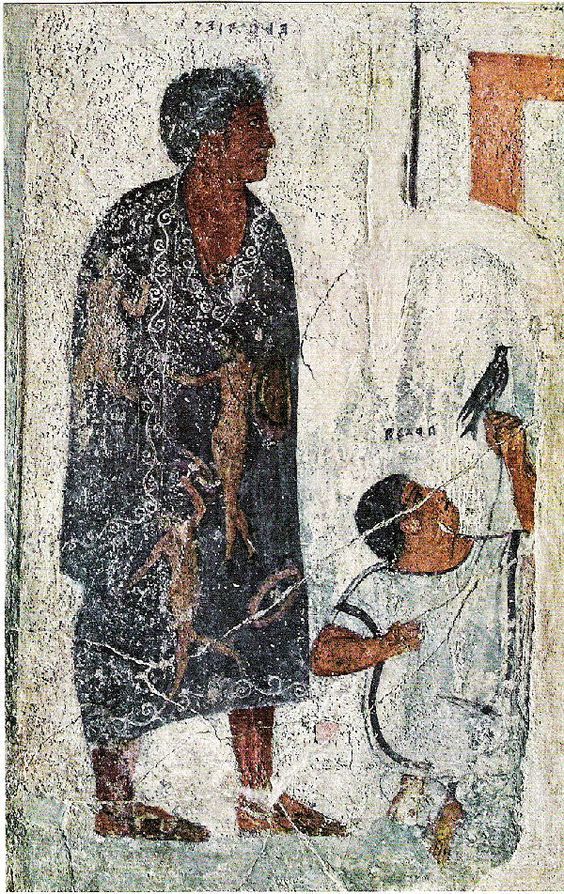


Eurasian steppe continued to be important source of migration and trade between Europe and Asia. Scythians, Iranic nomadic people, were important for facilitating the trade between East Asia and Europe through the silk road during the Iron Age. They controlled large parts of Eastern Europe ruling over Slavic people and later assimilating to the various Slavic groups after loosing their political standing. Other Iranic steppe nomads, connected to Scythian culture also populated the Eurasian steppe during and after Scythia. During the Migration Period, which happened around and after the time of Western Rome, even more different groups migrated to Europe through the steppe. Huns arrived from east to the Volga region by mid-4th century, and they likely came from the eastern parts of the steppe from Mongolian area. Their origins are unclear and they were either Mongolic, Turkic or Iranic origin, possibly some mix of them. Primary descriptions of them suggests facial features common in East Asia. They were possibly the nomadic steppe people known as Xiongnu in China, which was significant in East and Central Asia from 3rd century BCE to 2nd century CE until they moved towards west. Between 4th and 6th centuries they dominated Eastern and Central Europe and raided Roman Empire contributing to the fall of Western Rome.
After disintegration of the Hun Empire, the Huns assimilated likely to the Turkic arrivals of the second wave of the Migration Period. Turkic people originate likely in southern Siberia and in later Migration period they controlled much of the Eurasian steppe and migrated to Eastern Europe too. A Turkic Avar Khagenate (nation led by a khan) controlled much of Eastern Europe from 6th to 8th century until they were assimilated to the conquering Franks and Bulgars (another Turkic people). The Bulgars established the Bulgarian Empire, which lasted from 7th to 11th in the Balkans. The Bulgars eventually adopted the language and culture of the local Southern Slavic people. The second wave of Migration Period also saw the Moor conquest of Iberia and Sicily. Moors were not a single ethnic group but Arab and various Amazigh Muslims. Their presence in the Iberian peninsula lasted from 8th to 15th century and they controlled Sicily from 9th to 11th century until the Norman conquest. During the Norman rule though, the various religious and ethnic groups (which also included Greeks and Italic people) continued to live in relative harmony and the North-African Muslim presence continued till 13th century. Let's be clear that the Northern Europe was also not white. Vikings also got their hands into the second wave migration action and traveled widely to east and west. Viking crews were not exclusively Scandinavians, but recruited along their travels various other people, as DNA evidence proves. They also traded with Byzantium (when they weren't raiding it) and Turkic people, intermarried and bought slaves, some of which were not white or European. A Muslim traveler even wrote one of the most important accounts of Vikings when encountering them in Volga.
By this point it should already be clear that Medieval Europe was neither white, but there's more. Romani people, who originate from India and speak Indo-Aryan language, arrived around 12th century to Balkans. They continued to migrate through Europe, by 14th century they were in Italy, by 15th century in Germany and by 16h century in Britain and Sweden. Another wave of Romani migration from Persia through North-Africa, arrived in Europe around 15th century. Then there's the Mongol Empire. In 13th century they ruled very briefly a massive portion of the whole Eurasian continent, including the Eastern Europe. After reaching it's largest extent, it quickly disintegrated. The Eurasian Steppe became the Golden Horde, but lost most of the Eastern-Europe, except Pontic-Caspian Steppe. They ruled over Slavs, Circissians, Turkic groups and Finno-Ugric groups till early 15th century. The Mongolian rulers assimilated to the Turkic people, who had been the previous rulers in most of the steppe. These Turkic people of the Golden Horde came to be known as Tatars. Golden Horde eventually split into several Tatar khagenates in 15th century, when the khagenates, except the Crimean Khagenate, were conquered by the Tsardom of Moscovy. Crimean Khagenate was annexed by the Russian Empire in 1783. Crusades were a movement from Europe to Levant, but they also meant intermarriage in the the Crusader kingdoms especially between the European and Levant Christians, and some movement back and froth between these kingdoms and Europe, trade and a lot of movement back after the Crusader kingdoms were defeated in 13th century. Generally too trade across the Mediterranean sea was extensive and led to migration and intermarriage.
And here's some example of people of colour in Medieval European art, shown as part of the majority white European societies. First is from a 15th century French manuscript depicting Burgundy court with dark skin courtier and lady in waiting. Second one is from a Flemish manuscript from 15th century of courtiers, including a black courtier, going for a hunt. Third is a 15th century Venetian gondolier with dark skin.

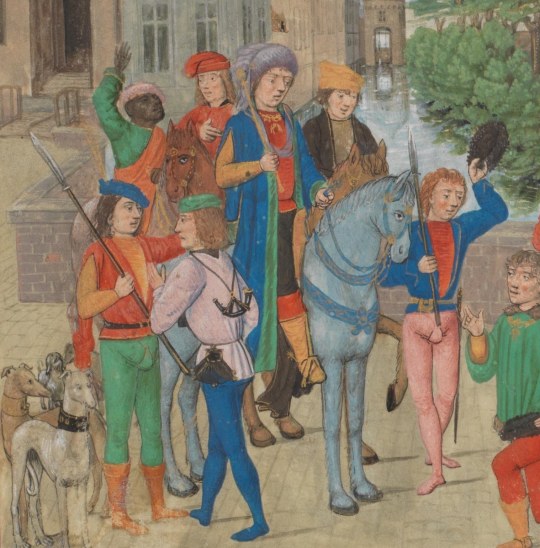

In Renaissance Era Europe was only increasing it's trade and therefore had even more connections outside Europe. The first picture below is Lisbon, which had strong trade relationship with Africa, depicted in late 16th century. People with darker skin tones were part all classes. Second image is an Italian portrait of probably a seamstress from 16th century. Third one is a portrait of one of the personal guards of the Holy Roman Emperor. Fourth image is a portrait of Alessandro de' Medici, duke of Florence, who was noted for his brown complexion, and the modern scholarly theory is that his mother was a (likely brown) Italian peasant woman.
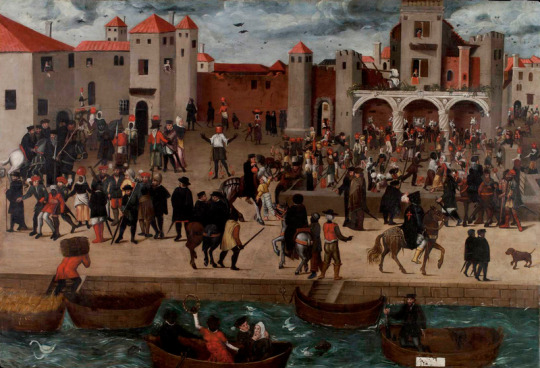

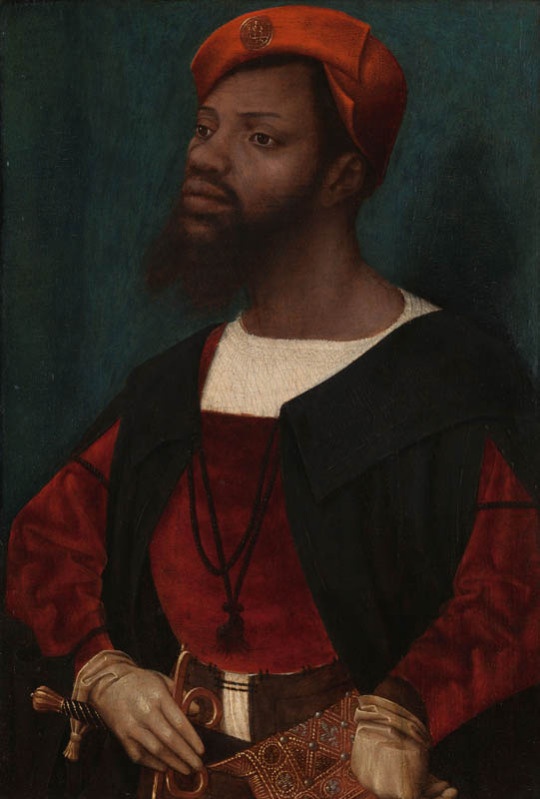

Colonialism begun in the Renaissance Era, but the wide spread colonial extraction and slavery really got going in the 17th century. Racial hierarchy was developed initially to justify the trans-Atlantic slave trade specifically. That's why the early racial essentialism was mostly focused on establishing differences between white Europeans and black Africans. Whiteness was the default, many theories believed humans were originally white and non-whites "degenerated" either through their lives (some believed dark skin was basically a tan or a desease and that everyone was born white) or through history. Originally white people included West-Asians, some Central-Asians, some North-Africans and even sometimes Indigenous Americans in addition to Europeans. The category of white inevitably shrank as more justifications for atrocities of the ever expanding colonial exploitation were required. The colonial exploitation facilitated development of capitalism and the industrial revolution, which led to extreme class inequality and worsening poverty in the European colonial powers. This eventually became an issue for the beneficiaries of colonialism as worker movements and socialism were suddenly very appealing to the working class.
So what did the ruling classes do? Shrink whiteness and give white working classes and middle classes justifications to oppress others. Jews and Roma people had long been common scapegoats and targets of oppression. Their oppression was updated to the modern era and racial categories were built for that purpose. The colonial powers had practiced in their own neighborhoods before starting their colonial projects in earnest and many of those European proto-colonies were developed to the modern colonial model and justified the same way. In 19th century, when racial pseudoscience was reaching it's peak, Slavs, others in Balkan, the Irish (more broadly Celts), Sámi (who had lost their white card very early), Finns, Southern Italians, the Spanish, the Southern French and Greeks all were considered at least not fully white. The Southern Europeans and many Slavs were not even colonized (at least in the modern sense, though with some cases like Greeks it's more complicated than that), but they looked too much and were culturally too similar to other non-white Mediterraneans, and they were generally quite poor. In many of these cases, like Italians, the French and Slavs, it was primarily others belonging in the same group, who were making them into second class citizens. All this is to highlight how very malleable the concept of race is and that it's not at all easy to define the race of historical people.
However, even if we would go with the racial categories of today, Europe was still far from being all white in this period. You had Roma, who certainly are not included in whiteness today, and European Jews, whose whiteness is very conditional, descendants of Moors in Southern Europe and Tatars and Turks in Eastern Europe and Turkey, which today is often not thought of as part of Europe, but historically certainly was. And then colonialism brought even more people into Europe forcibly, in search of work because their home was destroyed or for diplomatic and business reasons. There were then even more people of colour, but they were more segregated from the white society. Black slaves and servants are very much represented in European art from 17th century onward, but these were not the only roles non-white people in Europe were in, which I will use these examples to show. First is a Flemish portrait of Congo's Emissary, Dom Miguel de Castro, 1643. Second is a 1650 portrait of a Moorish Spanish man Juan de Pareja, who was enslaved by the artist as artisanal assistant, but was freed and became a successful artist himself. Third is a 1768 portrait of Ignatius Sancho, a British-African writer and abolitionist, who had escaped slavery as a 20-year-old. Fourth painting is from 1778 of Dido Elizabeth Belle, a British gentlewoman born to a slave mother who was recognized as a legitimate daughter by her father, and her cousin. The fifth portrait is of an unknown woman by (probably) a Swiss painter from late 18th century. Sixth is a 1760s Italian portrait of a young black man.

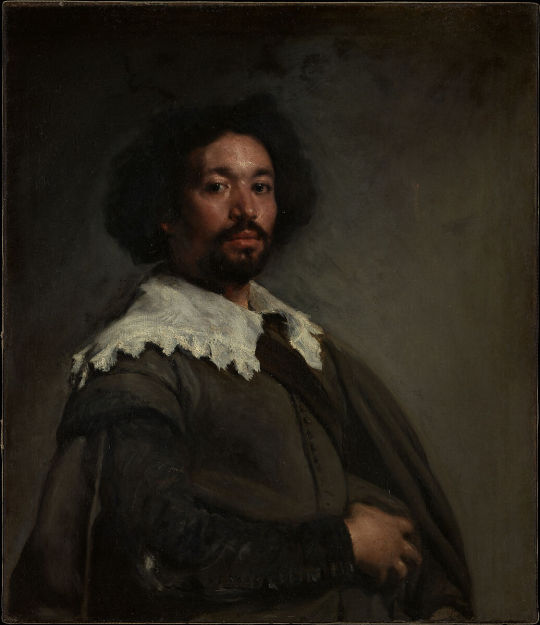
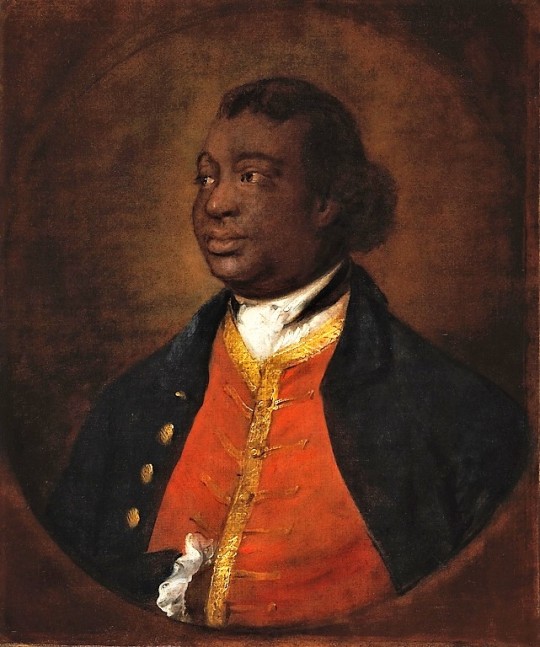
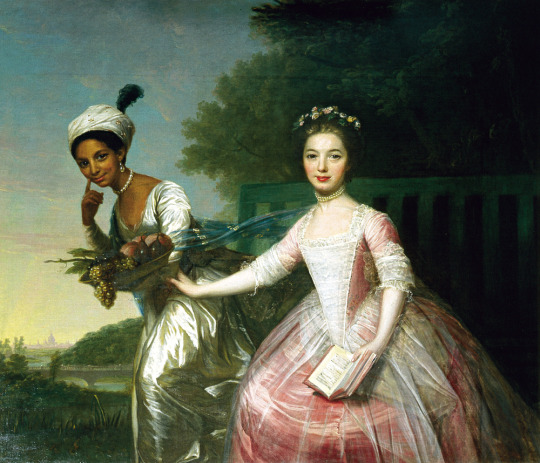
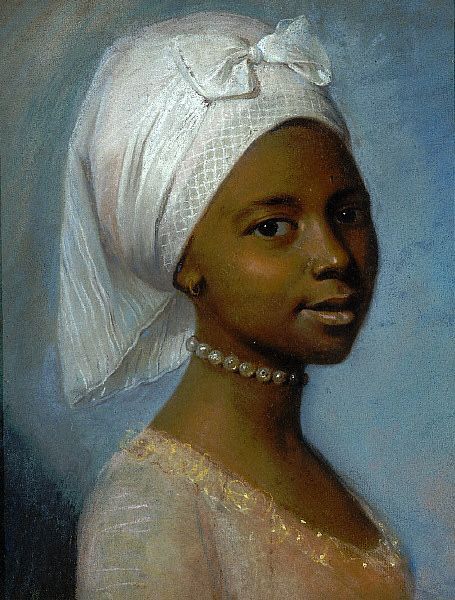
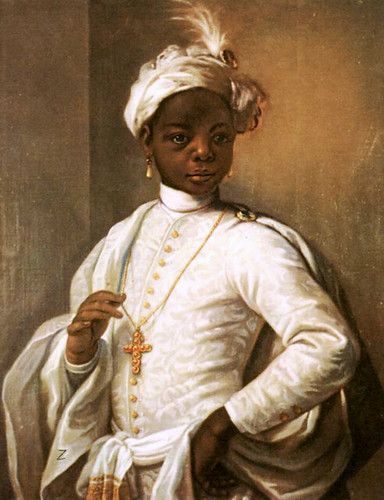
In late 18th century England abolished slavery in British Isles first, then in early 19th century in the whole British Empire, thanks to the continuous campaign of free Black people and some white allies, notably Quakers. Around the same time slavery was abolished in France (briefly till Napoleon got to power) after the French revolution. This meant there were a lot more free black people in Europe after that. In 18th century the Europeans, British especially, were colonizing Asia as much they could, which meant that in 19th century there started to also be a lot more Asian, especially Indian people in Europe. First picture below is of Thomas Alexander Dumas, who was son of a black slave woman and a white noble French man and became a general in the French revolutionary army. His son was one of the most well-known French authors, Alexander Dumas, who wrote The Count of Monte Cristo and The Three Musketeers. Second portrait is of Jean-Baptiste Belley, a Senegalese former slave, who became French revolutionary politician. Third portrait is from 1810 of Dean Mahomed, an Indian-British entrepreneur, who established the first Indian restaurant in London. Forth is Arab-Javanese Romantic painter Saleh Syarif Bustaman, who spend years in Europe. Fifth is a 1862 photo of Sara Forbes Bonnetta, originally named Aina, princess of Edbago clan of Yoruba, who was captured into slavery as a child, but later freed and made Queen Victoria's ward and goddaughter. She married a Nigerian businessman, naval officer and statesman, James Pinson Labulo Davies (sixth picture).
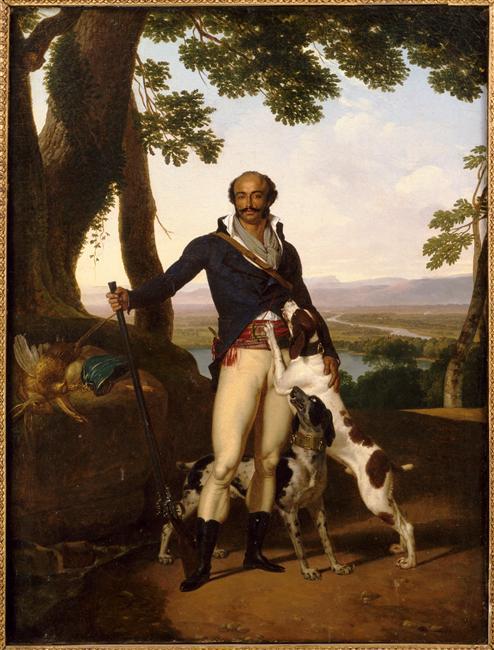


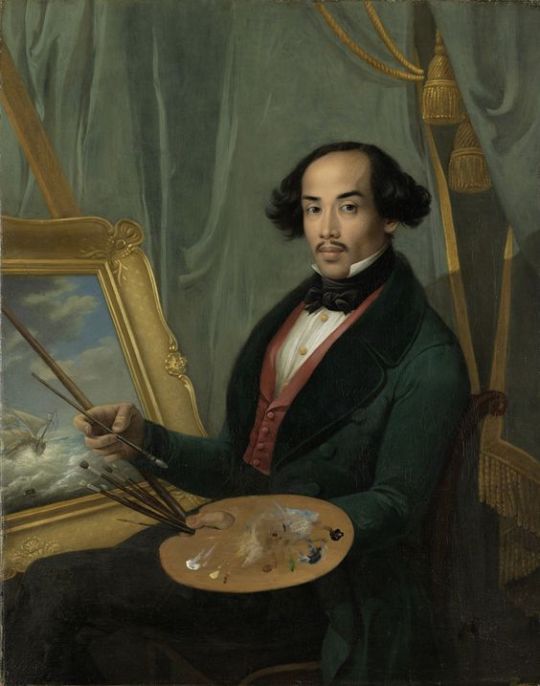
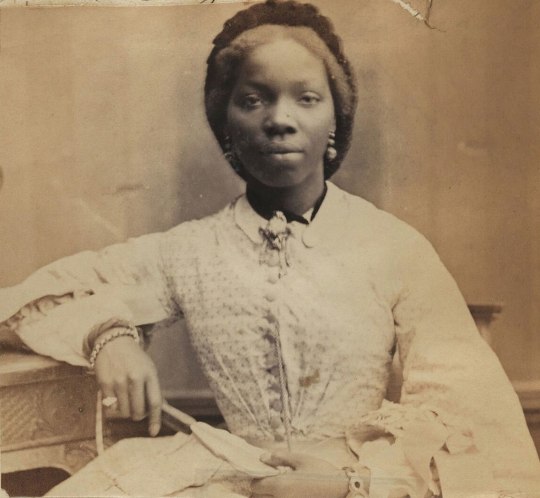
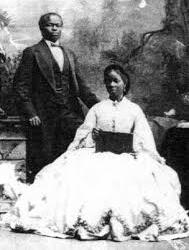
So any guesses on at what point was that "very white Europe" when the "west culture" begun? It kinda seems to me that it never actually existed.
#history#poc history#black history#historical art#european history#history of race#colonialism#racism#slavery#painting#photograph
192 notes
·
View notes
Text
Medieval Warhorses, Repost + additions!
Since people loved my "Preindustrial travel times" post so much, I decided to repost my "Realistic warhorses" info separately from the original link, where it was a response to "how to get the feel of realistic combat."
--
The original link is here.
The "Warhorse" post on my blog, plus a recent addition, is here.
And here's the text for people who want to go down my "grown up horse-girl" rabbit hole right away!
Medieval Warhorses:
First of all: DESTRIERS WERE NOT DRAFT HORSES. Horse/military historians are begging people to stop putting their fantasy knights on Shires, Belgians, and other massive, chunky farm-horses! The best known instance of “a knight needs to get lifted onto their 18-hand draft horse” is a SATIRE (A Yankee in King Arthur’s Court, if I remember right), but somehow laymen decided to take it seriously.
Hell, I think the film’s historians knew that this was extremely inaccurate and begged the director not to do it.
--
For the purposes of this post, I will not get into the different TYPES OF WARHORSES. That is a hyper-fixation for another day, lol.
—
First problem with “Draft horses as warhorses:”
The bulk of modern-day “breeds” are far too recent for a medieval or medieval-fantasy story. Modern horse “breeds” began around the 1700s-1800s, so that’s in the EXTREMELY late-medieval/early-modern period. Before that, most medieval horses were referred to by “TYPE/PURPOSE” and maybe a “Country/Region.” “Spanish/Iberian horses” (the ancestors of modern-day Andalusians, Carthusians, and Lusitanos) were overwhelmingly popular for combat, and other baroque horses were also esteemed.
Destriers are physically average-height at 15 hands high (about 5 feet tall at the shoulder/withers), but the important part is that they are STACKED at 1200-1300lbs when most 15-hand horses are only 900-1000lbs, so that’s a quarter to a third more weight in muscle.
And remember, muscle will not make a given horse look “chubby!” Good ways to get across a warhorse’s muscles in writing is 1) how ROCK SOLID they are when you touch them, 2) their chiseled shoulders, necks, and butts, and 2) when they get into motion, especially for a fight, their muscles will flex and get REALLY defined. The three regions I mentioned are usually the most visible if they’ve got horse tack or a rider on them.
Think of the difference between “regular horse” and “destrier” as “regular Tom Hardy, who looks fit but normal,” versus “Tom Hardy playing Bane, where he put on thirty pounds and his torso and arms look like a fucking tree-trunk.”
Warhorses had nerves of steel, and the best-trained warhorses used could sprint and turn on a dime–they’ve been called “the sports cars of the medieval world.” This is a far cry from huge, sweet, and lumbering draft horses.
Besides Spanish horses, modern-day candidates for destriers would be European cobs (heavier all-purpose horses, large Welsh cobs are the best-known modern breed), and Foundation Quarter Horses (working/stock horses that can herd cattle and race and actually USE their muscles, not the bloated halter-horses who are mostly bred to look “good” to judges).
—
But if the destrier was supposed to be the horse equivalent of “Tom Hardy as Bane” and not “The Mountain from Game of Thrones,” then how could they carry a knight’s armor as well as their own?
First of all, human combat armor is different from JOUSTING armor and it is easily half the weight for better mobility. Warhorses from proper medieval times aren’t shown wearing much horse-armor, even in jousting. The stuff you see in museums is also frequently the custom-made armor for wealthy nobles, who either 1) wore it once or twice a year for public celebrations, which is also why the armor’s in pristine condition instead of dented and bloody like combat armor would be, or 2) wore it because they were rich enough to not want themselves OR their expensive horses to die too soon in combat.
Assuming that all destriers needed to carry 150lbs for an adult armored man, PLUS another 150lbs of the horse’s riding tack and armor, is like people from the years 2500-3000 assuming that everyone with a “car” must have a Lamborghini or a Ferrari that takes up a lot of maintenance (if you want to keep it looking nice, at least) and can go 200 miles per hour.
So the vast majority of realistic warhorses/destriers didn’t get much if any armor, because 1) horse-armor is for princes and dukes, not Count Whoever’s third son or his nephew that he tossed out on adulthood with barely any money, and 2) horse-armor is going to weigh down your FAST and NIMBLE warhorse. (Remember: Knights wanted sports cars, not tanks!) Take a look at the horses and knights of the website called “Destrier!” Most horses there aren’t notably tall, and they mostly wear head-armor and fancy but not heavy horse-tack like capes, instead of full barding.
Another reason average/short warhorses were preferred is for medieval safety issues: You wanted to mount your horse from the ground without help. The famous knight Jean Le Maingre was so dedicated to fighting that he could VAULT onto his horse in armor, without touching the stirrups. His instructions are, essentially, “put on your armor, find your horse, put your hands on the horse’s back/saddle, and FUCKING JUMP.”
Unless you’re seven feet tall or a gymnast, you’re not jumping onto an 18-hand draft horse.
So all those Red Dead Redemption animations where you get to alley-oop your way onto your loyal steed? POSSIBLE, IF YOU ARE CRAZY/ANGRY ENOUGH.
Quick note: In ancient Ireland, they refer to a “steed-leap” that nobles, warriors, and other “people rich enough to own RIDING horses” were trained to use–with the important distinction that Gaelic nobles often took pride in either using saddles without stirrups, or NOT USING SADDLES TO PUT ANY STIRRUPS ON. So the bulk of Gaelic Irish nobles could theoretically go Red Dead Redemption on your ass.
—
And the third reason most combat-ready warhorses didn’t get armor is because infantry (the vast majority of most medieval armies) just had a low chance of hitting them in the first place.
First of all, most horses are already faster than people. Destriers were EXCEPTIONALLY fast as the cream of the crop. For the horse to need armor, someone needs a good chance of hitting the horse.
Second, most horses are hard to kill physically because horses don’t tend to like getting stabbed or shot at, so they will likely try to kill YOU, which means that a knight and his horse are TWO fighters who are both very angry and very protective of each other. Most people love their horses, and many combatants share intense bonds! IMAGINE IF YOUR HORSE IS ALSO YOUR SQUAD-MATE!
And last of all, most horses are hard to kill mentally because when you want to use cavalry, you ALSO want the other side’s infantry to get consumed by panic and bolt for their lives, away from their companions and AWAY FROM THE CHARGING HORSES. (Which routinely leads to a slaughter, often called a “rout” in period literature, or a “curb-stomp battle” on TV Tropes.) While most knights could dish out one-on-one duels against EACH OTHER, a knight against a foot-soldier is going to have a huge and explicitly unfair advantage if the soldier is not specifically trained and equipped to take them on.
See, when you get a herd of knights on their steeds, the noise and the wave of horseflesh charging at you is going to make your reptile-brain instincts scream “NOPE NOPE NOPE, WE GOTTA GO!!!”
That instinct is so strong that infantry ACTORS in movies–who know that this is not a real war, and the riders don’t actually want to kill them–still routinely break formation and run.
It was possible to stop cavalry with infantry and end up slaughtering them instead of getting routed–it was just extremely notable.
Also, unless you’re specifically going for blood: You don’t WANT to slaughter a whole formation of knights! That means you’ve just pissed away a WHOLE lot of money that the knights represent!
You killed the horses that you could have used for your own side, and possibly bred for more high-end horses! You ruined the armor that you could have used for your own side, or at least melted down for high-quality, already-mined metal! You killed the knights that you could have sweetened up and used for your own side–or more likely, told their families to pay you if they wanted them home intact.
Barely anyone remembers that knights were as good for HOSTAGES as they were for actually fighting. (Except for Game of Thrones, and it’s still only plot-relevant for Jaime Lannister and Theon Greyjoy, and they explicitly did NOT get the protection a noble hostage should have.) It’s noted that Agincourt was a GREAT ending for England because capturing all those French nobles earned them TWENTY YEARS’ WORTH of regular income in ransoms. If they hadn’t won and gotten all that sweet, sweet French money, they would have been bankrupted and depopulated instead.
—
Two more strikes I’d feel are appropriate for “not wanting draft-type horses in combat:”
-Logistics 1: Too much food, too much hassle. Horses are already notorious for eating a lot, and a DRAFT horse that’s 2000lbs instead of 1200lbs will eat twice as much. No army wants to use their fodder for only half the number of horses they’d expect.
-Logistics 2: Too much hair, too much hassle. Shires and other British horses often have feathering on their legs, and anyone with long hair knows that loose hair/fur is a fucking PAIN. You can braid a horse’s mane and tail, but if you’re one of the many average/poor knights who DON’T have servants to take care of your horse for you, do you want to spend extra time cleaning and combing out your horse’s LEGS instead of necessary things? Like feeding them, grooming them, and checking for wounds? Nope, you’ll probably shave the feathering off or just pick a horse that doesn’t have it.
-Extra note on Friesian horses, who are RIDICULOUSLY common in “medieval” movies: Friesian horses are technically baroque horses in body form (Strong-boned! Big necks and butts!), but they’re also over-used in general, so most horse folks are sick of seeing them in movies. And if you don’t have the right kind of MODERN Friesian, you’ll probably be a laughingstock in addition to an eye-roll.
Some strains of modern Friesians are from carriage-horse lines, often referred to as “big movers.” This means “fun to LOOK AT, but terrible to RIDE.” Because, you know, those strains of Friesians weren’t meant for riding, but for PULLING CARRIAGES. Their movements are big, dramatic, and flashy… and their trot is notorious for bouncing people out of the saddle with every step. Not something you want for a knight who fills his opponents with terror.
A good riding horse’s movements are usually smooth and low to the ground, often described as “floating” and “effortless.”
—
A horse-note that I can’t figure out where to put: Many Western cultures love the idea of fiery stallions (intact male horses) for their noble knights and kings to ride into battle on, but realistically, stallions are only half of a given horse population. Many Western stallions are also gelded if they’re not the cream of the crop (which is probably at least the bottom half of the male horse population). So mares can be used by at least half of a realistic formation who just wants a warhorse, and doesn’t care about aesthetics or masculinity.
Also, mares can be ruthless and stallions can be nervous wrecks! Horses are living creatures, with personalities and feelings!
Horses also aren’t very sexually dimorphic, so a 1200lb war mare is DEFINITELY a match for a 1300lb war stallion. And remember how Loras Tyrell used a mare in heat to distract The Mountain’s stallion? That happens with a lot of stallions… almost like they’re living creatures, with instincts that they can’t always control! So if you know when your girl is ready to go every month, you can play dirty in a joust, too!
Just remember that you’re taking an equal risk, since your mare will possibly try to let a stallion mount her instead of fighting. You will either need to bail when she starts making googly-eyes, or you need to know you have ABSOLUTE loyalty from her, and she will listen to YOU instead of “the hot dude I just met five minutes ago!” HORSES ARE LIVING CREATURES, WITH INSTINCTS THAT THEY CAN’T ALWAYS CONTROL.
Then geldings will be used by at least another quarter of “the knights who cannot afford a horse good enough to keep his testicles,” so that leaves “a quarter or less” of knights who can realistically be mounted on stallions.
WORSE NEWS: If you geld a stallion too late (usually once they’re MOSTLY physically mature at 4-5 years old), that risk may never go away–so you’ve got a gelding who’s not breeding quality, but he’s still chasing mares in heat and fighting other stallions in turf battles, without understanding that he can no longer make babies!
On the other hand, some cultures don’t geld stallions because they view it as unnecessary or outright unnatural… but they also don’t want half the horse population distracted by pretty mares, or fighting with other stallions who walk by the pasture, so those cultures breed them to be sweet and easily managed (outside of battle, at least).
In short: ALL HORSES HAVE POTENTIAL TO BE WARHORSES, WHETHER THEY HAVE BALLS OR NOT.
—
Update, Feb 2 – Another day to expand on that “Different types of warhorses” mention!
Much like the common misconception of “all knights must be at least 6 feet tall and have 200 pounds of muscle” varied in real life due to genetics, cultural values, and logistics problems, the assumption that “all knights MUST have top-quality destriers that cost seven times the price of a normal horse” was not the case for the vast majority of “knights.”
Knights would have either “the best horse they could AFFORD” or “the best horse FOR THEIR SPECIALTY.”
A poor knight, or one of the early Middle Ages, would have “one horse that they’re with all the time;” that horse may not be pretty or come from fancy breeding lines, but they would get the job done and most definitely be taken care of. A wealthy knight of the later Middle Ages, when everything got more expensive and status more codified and finicky, would have two or three horses–one horse for warfare and one for regular riding, with the really wealthy knights having a third packhorse to carry all their stuff. (Moreover, they would have at least one servant to help take care of three horses.)
A muscled sprinter like a destrier is better in tight quarters and for short bursts of speed; to bring in the modern example of a classic/Foundation Quarter Horse, who are ideally “short-legged and low to the ground,” these dudes can literally hit the ground running and reach top speed in a few steps/seconds, so compare that to a sports-car going from zero to sixty miles. The tradeoffs?
1) You need to be able to hang the fuck on… and to avoid getting pitched into a wall/enemy WHEN THEY STOP.
2) That full-throttle gallop will really wear out your horse. A good commander will not bring out their heavy cavalry right away, because you also have to figure out how to get them back from the enemy’s side of the field.
In very simplistic terms, this is one of several problems that the battle of Agincourt had for the French; you had a bunch of hoity-toity noblemen with no proper battle experience who all wanted to do things their own way… and how do medieval noblemen usually want to fight a war? JUST FLOOR IT AND HIT THINGS AS HARD AS YOU CAN.
That went so badly that the recorded death-toll for the French side of Agincourt has been commented as “a roll call for French nobles.”
A destrier would not be suitable for a scout or light-cavalry; they’d need lighter and ground-covering horses to cover rough terrain, and to chase down the enemy for long stretches–akin to a modern-day Thoroughbred. For period pieces they might resemble an Akhal-Teke or “Turkmene” horse. A modern-day Thoroughbred horse can “only” reach forty miles per hour at a gallop, but they can keep that up for a whole mile or longer. So now your knight’s problem is “Hanging on for two or three whole minutes,” and anyone in performing or athletics will explain how long and agonizing a few minutes would feel on a rampaging horse. Have you seen how stacked a racing jockey is? The general consensus I’ve seen from equestrians is that barely anyone in any other horse-discipline is that built.
Meanwhile, an ideal light-cavalry horse would need longer legs for a ground-covering stride, and they may or may not be taller as well; as seen in the Akhal-Teke article, many endurance horses tend to show a lot more ribs and bones than other breeds, due to how lean they are. But think of them less as a dainty riding horse and more like a hunting greyhound/sighthound–all muscle, no fat!
The other type of light-cavalry horse would likely be a pony, used to going for miles on rough terrain, with little if any feed.
EDIT Feb 4, 2024: My post got cut off, so here's the rest of it!
The other type of light-cavalry horse would likely be a pony, used to going for miles on rough terrain, with little if any feed.
A period-accurate scout's horse was known as the Irish hobby, ridden by their eponymous hobelar troops. These little dudes were VERY little and about 12-14 hands high (48-54 inches, or 4 feet tall to bit under five feet tall). They were known to cover 60-70 miles a day in their raids, which my "preindustrial traveling" post notes is the EXTREME upper end of mounted distance travel. Their modern descendant is likely to be the Irish Connemara Pony.
Very wealthy and/or lucky European horsemen could probably manage to buy/steal an Arabian horse, as they remain exceptional endurance horses to this day. However, excessively cold/wet climates will need a lot of upkeep for a desert-bred horse to stay healthy.
While Arabians are known for their adorable "dished faces," this is not actually required! Many well-bred native lines have a regular face (ie, a "straight nose/profile") but they are from well-bred parents and have the capabilities of other Arabians. To the other extreme, you have some modern show/halter lines with REALLY exaggerated heads that hit a lot of people's "Uncanny valley" buttons, and they find it creepy/weird instead of refined. This kind of "seahorse face" would NOT be seen in a period piece.
Notice how the smaller a horse gets, the more ground it can cover? This is partly because size only matters TO AN EXTENT for "how long a horse goes," and partly because of physics! Less weight for a horse to drag around on its own body means more energy for putting miles behind them!
190 notes
·
View notes
Note
thots on astrology? related, thoughts on mbti?
k i like that you guys just pop in my inbox from time to time and invite me to run my mouth about topics and concepts. like truly what else is this website for.
anyway astrology (& sorry, most of what i know here pertains specifically to europe in the middle ages onward) is genuinely such a bizarro historical case of a science whose core epistemological presupposition (a geocentrist and specifically anthropocentrist cosmology) has completely fallen out of favour in both popular and professional discourse, and i don't think most people appreciate how weird it is for astrology to continue existing with this degree of popular and mainstream participation lol. like most fringe science actually bothers to have some semblence of its own reactionary epistemology to fall back on; astrology just doesn't seem to care. it would be like if the medical guilds fully endorsed the position that blood is circulated in the human body by the heart, but then also recommended as treatments for clotting disorders medical practices that only make sense on the supposition that the liver is the origin of all blood and is continuously creating more of it. like no other science that i can think of tries to have it both ways to the extent astrology does. like, one reason phrenology and eugenics are bad comparison points here is because they're very much copacetic with post-enlightenment naturalism and evolutionary transpositions in the social sciences. astrology, like, intellectually is not and yet here it is anyway. ideology innit.
anyhow i assume the reason you asked about this in conjunction with mbti is because today's astrology is largely purporting to provide psychological analysis and is therefore more similar to a system like mbti than to the historical use of star-reading as a predictive science. obviously both astrology and mbti are deeply reactionary in this respect and belong to a larger trend toward attempting to categorise, measure, and taxonomise the psyche, tho an important difference here is that mbti has hereditarian elements, which no form of astrology that i know of does. i think astrology's shift in the personal-psychological direction has to do with a few different factors, including medical astrological practice (orthodox in the european middle ages, then varying degrees of heterodox from the early modern period onward) and self-help movements in the 20th century.
but in any case it, mbti, and similar attempts at psychometry are, like, staggeringly essentialist in conception and practice, and i do think their current popularity reflects some deeply reactionary tendencies amongst people who often (not always) consider themselves otherwise progressive or leftist. it's honestly kind of worrisome how many people will jump on a project that explicitly aims to define static and immutable human 'types' as long as it's dressed in quasi-spiritual or psy-scientific terminology. like i do think we all need to pause and think about the ideological ends and consequences of how we talk about each other and our bodies, minds, and birth circumstances 😵💫
947 notes
·
View notes
Text
How To Write Vampires With An Original Twist
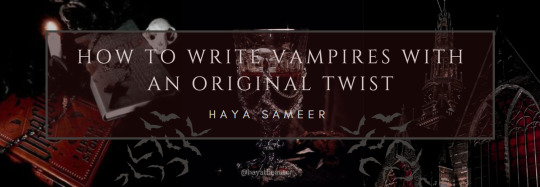
Mythical creatures are an essential part of the fictional scene, but the same creatures have been used so many times that these creatures now often seem redundant and boring in fiction. This is why I've started a new blog series: How To Create Original Mythical Creatures. I'm kicking off this series with vampires!
Join me as we dive into the world of vampires, from their mythical beginnings to their modern-day interpretations, and learn how to write them effectively in your own narratives.
Origins of Vampires
Vampires have a rich and diverse history rooted in ancient folklore and legends. Across various cultures and civilizations, tales of bloodsucking creatures have emerged, each with unique characteristics and behaviors.
One of the earliest known vampire myths comes from ancient Mesopotamia, where stories of blood-drinking demons known as Lilitu or Lamashtu date back to around 3000 BCE. These entities were believed to prey on humans, particularly targeting children and pregnant women.
In ancient Greece, the Lamia was a mythical creature often depicted as a female vampire who lured and devoured children. Similarly, in Roman mythology, the Strix or Strigoi were vampiric entities that fed on blood and flesh.
Moving forward in history, Slavic folklore introduced the concept of the Upyr, a vampire-like creature that rose from the dead to feed on the living. These early depictions of vampires often portrayed them as revenants or undead beings with a thirst for human blood.
Modern-Day Vampires: Where Were They Originated?
The modern concept of vampires, as we commonly know them today, took shape during the European Middle Ages and the Renaissance. Legends of vampires emerged in Eastern Europe, with notable figures like Vlad the Impaler contributing to the folklore. Vlad's reputation for cruelty and his association with impaling enemies on stakes led to the creation of the vampire archetype, inspiring Bram Stoker's iconic character, Count Dracula.
From ancient Mesopotamia to medieval Europe, vampire lore has evolved and adapted, weaving its way into popular culture and literature. Understanding the origins of vampires provides writers with a rich tapestry of mythology to draw upon when crafting their own bloodsucking creatures.
I wanted to go into more detail regarding the Lamashtu and Lamia since they’re not as well known as their Slavic and European counterparts, but unfortunately, that would deviate from the purpose of this blog.
The Evolution Of Vampiric Appearances
Before we proceed with this section, it's crucial to clarify that the mythical creatures and beings discussed in this blog are not direct representations of ancient vampires. Instead, they serve as inspirations for the concept of vampires and share certain attributes with our modern-day depictions, including blood-feeding, pale skin, human-like appearance with some animalistic features, and so on.
Vampiric Creatures In Mythology
In ancient mythology, vampiric entities were not always depicted as the suave, charming figures we see in modern vampire tales. Instead, they often embodied primal fears and monstrous traits.
Lamia: In Greek mythology, Lamia was a terrifying creature depicted as a woman with a serpentine lower body. She was known for her insatiable hunger for children, often depicted as a child-eating monster. Lamia's appearance combined elements of human and serpent, emphasizing her monstrous nature and predatory instincts.
Lamashtu: In Mesopotamian mythology, Lamashtu was a malevolent demon who preyed on pregnant women and newborns. She was depicted with a fearsome appearance, often described as having the head of a lion, the body of a donkey, and bird-like talons. Lamashtu's grotesque features and destructive tendencies reflected ancient beliefs about the dangers of childbirth and infancy.
Lilitu: In Mesopotamian and Jewish folklore, Lilitu or Lilith was often associated with nocturnal demons or spirits. She was depicted as a seductive, winged demoness who preyed on men and newborns. Lilitu's appearance varied across different myths but often included features like wings, long hair, and sometimes talons, emphasizing her otherworldly and dangerous nature.
Strix: In Roman and Greek mythology, the Strix was a bird-like creature or vampiric owl associated with dark omens and death. It was believed to be a shape-shifting creature that could transform into a woman or an owl. The Strix's appearance combined avian and human features, instilling fear and dread in those who encountered it.
Strigoi and Upyr: In Eastern European folklore, Strigoi and Upyr were blood-sucking undead creatures similar to modern-day vampires. Strigoi were believed to be restless spirits or revenants that returned from the dead to torment the living. Upyr, on the other hand, were vampire-like beings with sharp fangs and a penchant for drinking blood. Both creatures were depicted as pale, gaunt, and often with elongated canines, reflecting their predatory and undead nature.
Medieval Depictions: Shift in Appearance
During medieval times, the depiction of blood-sucking mythological creatures underwent a transformation, shifting from monstrous and terrifying to more humanoid and relatable appearances. This change in portrayal can be seen in various aspects of their physical features:
Teeth: Originally depicted with long, sharp fangs or talons for blood-drinking, medieval depictions often featured more subtle fang-like teeth or no visible teeth at all, aligning with the concept of vampires being able to blend in with humans.
Skin: While ancient vampires were often described as monstrous and otherworldly, medieval vampires were portrayed with paler skin to signify their undead nature but without extreme deformities or monstrous features.
Appearance: Medieval vampires were often depicted as more human-like in appearance, with regular clothing and a less monstrous demeanour. This shift allowed for more nuanced storytelling and exploration of themes like temptation, desire, and the struggle between humanity and monstrosity. This is also what birthed the romanticization of vampires.
Mythological Vampire vs Modern-Day Vampire
Mythological vampires, rooted in ancient folklore and mythology, were often depicted as malevolent spirits or creatures with supernatural powers. These creatures varied widely across different cultures, from the Lamia and Lilitu in Mesopotamian mythology to the Strix in Roman and Greek folklore, and the Upyr in Slavic tales.
These ancient vampires were not always the suave, charismatic beings we see in modern media. Instead, they were often portrayed as terrifying and monstrous, with features that reflected their otherworldly nature. For example, the Lamia was described as a demonic woman with the ability to transform into a serpent, while the Lilitu were associated with storm demons and fertility spirits.
In contrast, modern-day vampires, especially those popularized in literature and film, have undergone significant transformation. They are often depicted as sophisticated and alluring, with a penchant for romance and drama. Authors and filmmakers have humanized vampires, giving them complex personalities, tragic backstories, and even moral dilemmas.
While modern vampires still retain some traditional attributes such as a need for blood and sensitivity to sunlight, their portrayal has evolved to include a wide range of characteristics and abilities. This shift has allowed for more diverse and nuanced storytelling, exploring themes of immortality, love, redemption, and the eternal struggle between good and evil.
Which Option Is Better For Your Novel?
When deciding which type of vampire to incorporate into your story, consider the tone and themes you wish to explore. Mythological vampires offer a darker and more primal essence, rooted in ancient fears and superstitions. On the other hand, modern-day vampires provide a canvas for exploring human emotions, relationships, and societal issues through a supernatural lens.
Ultimately, the choice between mythological and modern vampires depends on the narrative direction and atmosphere you want to create. Both types offer unique storytelling opportunities, allowing you to craft captivating tales of mystery, romance, horror, or even philosophical introspection.
Research and Resources
Writing about mythical creatures like vampires requires a solid understanding of folklore, mythology, and literary traditions. Here are some resources and research methods to help you delve into the world of vampires and other mythical beings:
Books and Literature
Start by exploring classic works of literature that feature vampires, such as Bram Stoker's "Dracula," Anne Rice's "The Vampire Chronicles," and Stephenie Meyer's "Twilight" series. These novels not only showcase different interpretations of vampires but also delve into the cultural and historical contexts surrounding these creatures.
Mythology and Folklore
Dive into ancient myths and folklore from various cultures to uncover the origins of vampire legends. Look into Mesopotamian, Greek, Roman, Slavic, and other mythologies to discover different vampire-like entities and their characteristics.
Research Journals and Articles
Academic journals and articles can provide valuable insights into the evolution of vampire folklore, the psychological aspects of vampirism, and the cultural impact of vampire mythology. Explore journals in folklore studies, literary analysis, and cultural anthropology for in-depth information.
Online Resources
Utilize online platforms such as mythology databases, folklore websites, and literary forums to gather information and engage in discussions about vampires. Websites like The Vampire Library, Vampire Empire, and Vampire Rave offer a wealth of resources for vampire enthusiasts and writers.
Historical Research
Delve into historical records, archival documents, and historical accounts related to vampire hysteria, vampire burials, and vampire folklore in different regions. Understanding the historical context can add authenticity to your portrayal of vampires.
Interviews and Expert Opinions
Consider reaching out to folklore experts, historians, and scholars specializing in vampire mythology for interviews or consultations. Their insights and expertise can provide valuable perspectives on vampire lore and storytelling.
Creative Exploration
Don't hesitate to let your imagination roam while exploring vampire mythology. Experiment with creating your own vampire mythology, incorporating unique traits, powers, and origin stories for your vampires.
By combining thorough research with creative exploration, you can develop rich and compelling portrayals of vampires in your writing. Remember to stay open to diverse interpretations and adaptations of vampire folklore, allowing room for innovation and originality in your storytelling.
I hope this blog on How To Write Vampires With An Original Twist will help you in your writing journey. Be sure to comment any tips of your own to help your fellow authors prosper, and follow my blog for new blog updates every Monday and Thursday.
Looking For More Writing Tips And Tricks?
Are you an author looking for writing tips and tricks to better your manuscript? Or do you want to learn about how to get a literary agent, get published and properly market your book? Consider checking out the rest of Haya’s book blog where I post writing and publishing tips for authors every Monday and Thursday! And don’t forget to head over to my TikTok and Instagram profiles @hayatheauthor to learn more about my WIP and writing journey!
#hayatheauthor#writing community#haya's book blog#writing tools#writing advice#writer things#writer community#haya blogs#writers on tumblr#writing life#writing techniques#writing stuff#writer tools#writers of tumblr#writer blog#women writers#writer stuff#writer advice#writer tips#creative writing#novel writing#writing vampires#vampire#vampire books#writerblr#writing corner#writing inspo#ya writing advice#writing tips and tricks
147 notes
·
View notes
Note
You just posted like ten different things about potatoes in the span of maybe five minutes, and I gotta know your take on "The Martian".
Like, the (fictional) man alone on a planet literally only survives because of potatoes shrink-wrapped in plastic for a Thanksgiving meal. If they weren't slated to be on Mars for Thanksgiving, he would have died.
And Andy Weir (author of the original novel) did such a good job with the science of every other element to the story, I honest-to-god believe that potatoes could actually manage to grow in Martian soil (even if that's not been proven for certain afaik).
Which means..... could potatoes terraform Mars into sustaining life??? Are potatoes the key to the universe???
Haha sorry for going so hard on them! Those were mostly all posts from 2020 when gardening and fantasy worldbuilding were lockdown fixations for me. One of them blew up recently so I wanted to give The People more of the content it seemed they were looking for. I don't actually know a lot about potatoes. I just think they're neat.
I do not want to take apart the concept of "colonizing Mars" as some kind of woke gotcha. I want to take your question seriously and charitably. However, I just am the kind of person who's like "Hmm, 'colonize', we should really stop and unpack that word," so let's do that, without forgetting the potato element.
(What "I don't know a lot" means: Potatoes were a crop my family grew several acres of for a few years on our farm before we switched our focus to sheep. I am about 50% as reliable as a horticultural brochure on various potato diseases and growing condition issues. I have listened to two University lectures and read perhaps four historical journal articles beginning-to-end on how the Columbian Exchange affected early-modern Europe, that and half as much again on medieval and early modern European farming practices and population changes, and perhaps three science/history articles specifically on the domestication and proliferation of the potato. I am a white Canadian who actively seeks out information and training in Indigenous history and culture in the Americas, but that's probably still only equal to like, two Native Studies classes in university. I know more than the average person on this topic, but I am also not an expert compared to people who have devoted serious time to learning about this.)
But I have some intuitions in a couple of ways:
The Martian is probably being wildly over-optimistic about its potatoes. They would probably have been irradiated into sterility before being vacuum-packed, and I don't think you can split and propagate them that quickly or successfully. However, potatoes can definitely grow in all kinds of conditions (including under my sink).
They might not be the world's healthiest or happiest potatoes, tho. Soil quality definitely affects the end product. Presumably Watney, being a botanist studying Mars' soil composition, knew how much he had to ameliorate his soil with latrine compost (which would definitely have needed a LOT of processing, since human waste is generally not good for plants, but maybe he used chemicals to speed that up?) to get good soil. However, we would probably need to add a LOT of shit to Mars' soil (and air, and water) for it to host plant life.
Mark Watney makes a joke about having "colonized Mars" because "colony" is Latin for "farm" and he farmed on Mars so haha, funny joke! And we talk about colonies on Mars partly because that's what science fiction did, and a lot of science fiction has been into that colonialism aesthetic. But colonialism and empires actually aren't great, not just because they necessitate huge amounts of racism, oppression, and genocide—I know, you asked me a fun question about potatoes and did not sign up for this, I'm not here to drag you, hear me out—but because they're also really sucky models for agriculture and successful societies generally.
My British ancestors tried to be colonial farmers in a place that is sometimes colder than Mars (Canada's Treaty Six), and let me tell you: IT SUCKED. Most of the crops and herbs and vegetables and flowers that settlers here brought from home and are used to? DON'T FUCKEM GROW. For the Canadian prairies to become conventional farmland, farmers and scientists had to scramble to find, or produce, cold-hardy varieties of everything from wheat to roses. A lot of flowers and plants that are unkillable invasive zombie perennials in other climates don't survive our winters no matter hard we try. The trees and flowers that hold cultural or sentimental attachments for us often don't grow here. The climate is so harsh and population is spread so thin that we cannot do the 100 mile diet and eat foods we're familiar with, and can hardly even manage the 1000 mile diet. (Not that I try, but, my family did once look into it)
A huge number of colonial homesteads, where the pioneers go out on their little covered wagon and build little houses on the prairie? Failed miserably and got bought up by land speculators. My own family came out to Alberta in the 1880s and moved around from land assignment to land assignment, like, six times before settling at their current place in the early 1900s.
Meanwhile: POTATOES
Potatoes are less than ten thousand years old! I am not any kind of expert on archaeology, please nobody throw things, but humans showed up in the Andes (think: high, cold mountains) of South America roughly 9,000 years ago. There are hundreds of wild potato varieties, but they generally produce fairly tiny tubers. It took active work of Indigenous Andean people around 8,000 years ago around Lake Titicaca to cultivate specific strains of potato, doing oldschool genetic modification to make them bigger, more delicious, and hardier. From that cultivation effort around a single species of wild potatoes, they produced thousands of cultivated potato varieties.
Ancient Andean farmers and botanists also played a big part in cultivating quinoa from wild amaranth, as well as producing modern food crops you probably haven't heard of, like oca, olluco, mashua, and yacon, and also coca, which may get a bad rap because it's what cocaine and coca-cola are made from but you cannot deny it's got kick.
Basically, Indigenous people of the Americas (South, Central, and North) went all in on botany and plant cultivation. Plants that we take for granted now have mostly been developed by Indigenous people in the past few thousand years: Tobacco, sunflowers, marigolds, tomatoes, pumpkins, rubber, vanilla, cocoa, sweetcorn, maize, and most kinds of pepper except peppercorn. These things were not found; they were made, by careful cultivation of the world as it was.
This gives us a vision of the future. Colonization, and industrial agriculture, both lean us towards the vision of a totally uniform end product, with the same potato varieties grown on each farm because we have made every farm the same. Instead we could embrace biodiversity and focus on privileging local knowledge and considering the interactions of environment, plants, microbiota, and people. We could create potatoes that were happy on Mars. We could create Mars that is happy to have us. We could create a society that can accept what Mars has to offer.
A lot of why we dream about colonizing Mars is the idea that the Earth itself is dying, that we are killing it, and we need to abandon this farmstead and seek out a new frontier. I acknowledge that shit is bad, but I don't agree with that framing. I am increasingly persuaded that there is a third path between ecological destruction and mass exodus, and I think we need to reject European colonial mentality that creates the forced choice. I find far more use in privileging the knowledge of people who live on and with land than their landlords and rulers, and I especially find value in Indigenous knowledge of land management practices and food production.
I am absolutely not saying that Indigenous people were or are wonderful magical ~spiritual beings~ who frolicked in an Edenic paradise that only knew death and disease once white people showed up. This isn't noble savage bullshit, nor am I invoking people who existed once but whom I have never met. I am saying that I have Indigenous neighbours, colleagues, relatives, and elected representatives. I have learned about mental health, leatherworking, botany, and ecology from Metis and First Nations elders and knowledge-keepers. And like. They have good and useful shit to say.
This is about culture, not race. It is not that their biological DNA means that they know more than me about how to get food from this landscape. It's about cultural history and what we learn from our heritages. What have our cultures privileged? Like, Europe has historically been super into things like metallurgy, domesticating livestock, and creating dairy products. If I want to smelt iron or choose animals to make cheese from, European society would have a lot of useful information for me! And what Indigenous cultures in the Americas have historically focused on instead of cows and copper* include 1) getting REAL familiar with your local flora and figuring out how to make sure you have lots of the herbs and grains and roots and berries you need, and 2) how to make a human society where people can live and have good lives, but do not damage the environment enough to impair the ability of future generations to have the same sort of life.
*Several indigenous American cultures did practice various forms of metallurgy. It's just one of those proportional things, about what societies really go for
Conclusion
I think we could use the processes that formed the potato to find and foster forms of life that could survive on Mars. It would involve learning to think that botany is a sexy science, and understanding just how rich and complicated the environment is. To oxygenate the atmosphere, we'd have to get super enthusiastic about algae and lichen and wetlands. We would have to learn to care deeply about the microorganisms living in the soil, and whether the potatoes are happy.
We'd have to create an economy that counts oxygen and carbon dioxide production on its balance sheets. To learn how to wait for forests to grow back after a fire, instead of giving up in despair because the seedlings aren't trees yet. To do the work now and be hopeful even though we might not see the payoffs for decades, or our victories might only be witnessed by future generations.
So yes, I think we could totally plant potatoes on Mars
But I also think that if we ever got there, we'd have turned into the kind of people who could also save Earth in the first place.
Which makes it a good enough goal in my opinion.
2K notes
·
View notes